#First time drawing Radium too
Text
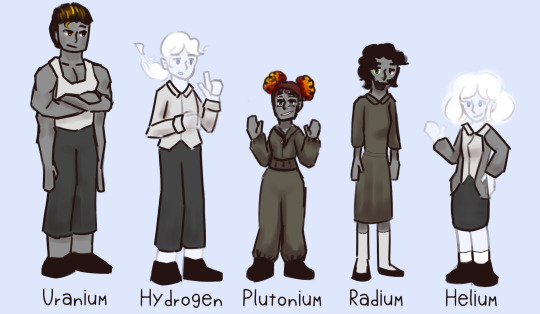
I haven’t drawn these guys in forever
my atomic little guys
8 notes
·
View notes
Text
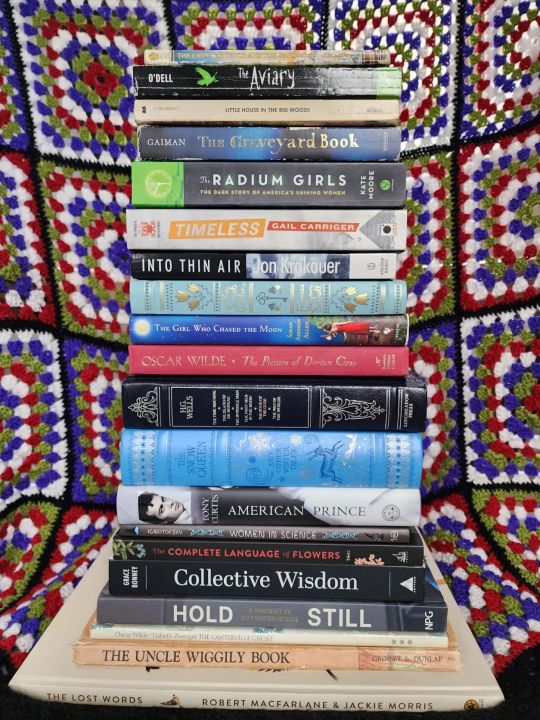
Twenty Books Challenge
Hypothetically, you are only able to keep 20 of your books. Only one book per author/series. So what books are you keeping?
I was tagged by @the-forest-library - thank you!
This was way harder than I imagined (and I still messed up because I have 2 books by the same author oops). I was surprised by how many of the books I chose to keep are non-fiction. I also may have messed up with the rules with some of my collection books but oh well.
From the bottom up:
The Lost Words by Robert MacFarlane & Jackie Morris - just a beautiful book that reminds us how important words are.
The Uncle Wiggly Book by Howard R. Garis. One of the first books I read as a child, and this is the copy I've had since childhood. It's also the book that started my book collecting hobby.
The Canterville Ghost by Oscar Wilde - such a sweet, fun story and this one has great illustrations. (this is the book I'd switch out for something else since I messed up with the rules)
Hold Still by various. This was a project started by The Duchess of Cambridge during The COVID Pandemic. She and the National Portrait Gallery collected thousands of photos and went through and chose the top 100 to put into book form. It's a story of life during a modern pandemic. It's incredibly moving.
Collective Wisdom: Lessons, Inspiration, and Advice From Women Over 50 by Grace Bonney. A Christmas gift from one of my kids in 2021. It's a beautiful collection from women, most of whom are average, every day women, very few celebrities or well knowns are in this book. And the diversity is great too (Native, WOC, Disabled, Trans etc.).
The Complete Language of Flowers by S. Theresa Dietz the classic book of flowers and their meanings with beautiful drawings.
Women in Science by Rachel Ignotofsky. 50 Inspiring and notable women in Science. Fun, cartoonish illustrations as well.
American Prince by Tony Curtis. Because he's so pretty, and his whole face lit up when I told him what I thought of his book when he signed it for me.
The Snow Queen and Other Winter Tales by various. Collection of tales from various Fairy Tale books and authors. I have a few of these but this one I think is my favorite.
The Works of H.G. Wells by H.G. Wells. A collection of stories by Wells. The Time Machine was the first Science Fiction book I'd read. I read it as a teen and I loved it.
The Picture of Dorian Gray by Oscar Wilde (and this would be the one Wilde book I'd keep since I'm only allowed to have one book by the same author). This is my all time favorite book.
The Girl Who Chased the Moon by Sarah Addison Allen. I have loved and own every book Allen has written, but I think this is my favorite.
The Secret Garden by Frances Hodgson Burnett. I have a few copies of this book, it's a favorite. I chose this version because it's just very pretty.
Into Thin Air by Jon Krakauer. Because Mother Nature DGAF. Also as I was being admitted to the hospital for my hysterectomy the admitting nurse who was doing all my vitals, giving me my IV etc. was reading this book and we discussed it. We both agreed that this book confirmed for us that we never want to climb Mount Everest.
Timeless by Gail Carriger. The final book in the Soulless series. I loved this whole series. I chose the last book, however, because it's one of the few series that I absolutely loved everything about how it ended.
The Radium Girls by Kate Moore. The incredibly infuriating story of the women who risked their lives in watch factories and how little help they got. This book made me a better feminist and grew my understanding of the importance of women's rights and how important our history is.
The Graveyard Book by Neil Gaiman. I think this was the first Gaiman book I read and it's my favorite.
Little House in the Big Woods by Laura Ingalls Wilder. A series I read one summer in my youth. I chose this one because of its iconic cover, and because it's the first in the series.
The Aviary by Kathleen O'Dell. One of my kids read this when they were younger and suggested it to me. It's one of my all time favorite middle grade reads. It's magical.
The Lion the Witch and the Wardrobe by C.S. Lewis. My 5th grade teacher, Mrs. Bauer (my favorite teacher ever) read this out loud to us in class. I fell in love with the story. I never read it again until I was a married adult with children. It's the first book I ever re-read as an adult (Uncle Wiggly is the first book I ever re-read). And I re-read TLtWatW at least every couple of years.
I tag anyone who wants to do this!!
16 notes
·
View notes
Text
That time The Shadow kidnapped a guy in order to walk into a death trap in his place, and then tried rescuing the villain from his own death trap while wounded and barely conscious
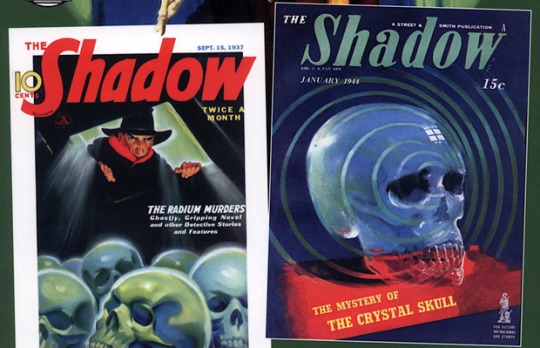
The Radium Murders is definitely one of the more underrated Shadow novels, even I’ve never quite paid much attention to it recently. It’s one of those novels I’d particularly recommend to those who want to get a solid grip on The Shadow’s characterization. So I’m going to highlight some of my favorite sections of it, such as the part mentioned above. SPOILERS for The Radium Murders, should you decide to read it, which you should.
Context is, The Shadow is investigating an old professor who’s murdering his investors through radium poisoning, and has contacted one of the investors soon to visit him and fall victim. He warns the man repeteadly that he must quickly take his place, but that doesn’t work and said man attacks him.
"What has happened?" he asked. "Nothing about the invention − I mean, nothing has happened to Professor Dorth?"
"Nothing," replied The Shadow, "except that there will be danger if you visit him. There is no time for lengthy discussion, Mr. Wadsford. I need your full confidence!"
"Concerning what?"
"The visit to Dorth's. I intend to go in your place!"
Wadsford came to his feet, glaring at The Shadow, who was seated in the chair nearest the door. "Professor Dorth warned me of this!" exclaimed Wadsford. "He told me to beware of strangers who might seek facts concerning his invention. If −"
"Calm yourself, Mr. Wadsford," interposed The Shadow, his eyes fixed upon the man. "I said before that time was limited. I intend to give instructions, your part is to follow them!"
Wadsford's teeth gritted. Angrily, the man reached for the doorknob. The Shadow extended an intervening hand. He caught Wadsford's forearm in a rigid grip.
"Remain here," ordered The Shadow, "until we have made our arrangements concerning −"
Wadsford interrupted with a sudden action. Twisting, he lunged for The Shadow, trying to thrust back the arm that held him at length. Wadsford's thrust was powerful; he started a shout as he came. The Shadow stopped him short. The gripping hand tightened; it twisted. Wadsford writhed; The Shadow's free hand clapped upon his lips.
With a shove, The Shadow sent his attacker half across the drawing−room, then used Wadsford's own weight to pull himself to his feet. Clamping his forearm about the man's neck, The Shadow added a quick choke that dropped the fellow limply into a chair. Wadsford gasped helplessly; he was dazed by the jujitsu thrust.
The Shadow clamped the man's hands behind him; bound them with a leather thong, that he had carried on this expedition in case of trouble with Dorth's dead servant, Tardon. He used Wadsford's handkerchief to gag the man. Another strip of leather took care of Wadsford's ankles. It was swift work; and with double reason.
Wadsford was recovering by the time The Shadow completed the task; moreover, The Shadow had much to do within the coming minutes.
And then, he succeeds in quieting the man by reenacting a scene straight out of a horror movie, where he proceeds to shape his face into the man’s own right in front of him. Which does the trick in regards to scaring him into sitting down quietly.
The Shadow had dropped his cloak upon a chair, with the bulky objects beneath it. Staring with wide−opened eyes, Wadsford saw him lift the cloak and lay aside a brace of automatics. He watched The Shadow pick up a flat box, which proved to be a make−up kit. Propping Wadsford back against a chair, The Shadow rested the make−up box in his own lap. Eyeing a mirror, looking beyond it, he began a facial transformation.
Steadily, carefully, he bulged the contour of his forehead; squared his jaw; added a putty−like substance to his cheeks. It required longer for The Shadow to shape his nose like Wadsford's. Then, with a warning whisper, he leaned across and pulled the gag from Wadsford's teeth.
The prisoner made no outcry. He was as awed as he was helpless. The Shadow studied Wadsford's lips; tightened the gag between the man's teeth; went on to complete his make−up.
As a final touch, he took a shell−gold tooth from his make−up kit and fitted it over one of his own bicuspids, to match a gold tooth that glittered from Wadsford's own mouth.
Packing his make−up kit, The Shadow followed with a careful search of Wadsford's pockets. He found various items that he wanted, including Wadsford's Pullman ticket stub. Rising, The Shadow picked up his various belongings, turned out the drawing−room lights and opened the door.
He saw the porter sitting idly at the front of the car; the attendant was the only person faced in The Shadow's direction. A moment later, the porter dozed. The Shadow stepped from the drawing−room and closed the door behind him.
And then, as he predicted, the villains proceed to try and trap him. Most would expect this to be the point where The Shadow breaks out into a storm of cackling violence against them, and they definitely deserve it by this point. But that’s not how the pulp Shadow works. Because there are very hard lines that The Shadow respects when it’s time to decide to take a life. One of those being, he will only address deadly force towards murderers. He offers one of the villains, a swindler involved in the professor’s schemes, a chance, and he’s willing to throw his life on the line to see if he takes it, and of course put on a very convincing act to do it.
At any instant, he could have ended this farce; sudden blasts through the leather would have dropped Jadway before the plotter could fire.
Such action would have left Dorth and Van Bryck dumbfounded, easy prey for The Shadow. Nevertheless, The Shadow desisted from the move. He was willing to continue his part as Price Wadsford for a while longer.
The Shadow had given Jadway a chance to play square. The crook had not taken it. Therefore, Jadway deserved the same fate as Dorth and Van Bryck.
Yet The Shadow was giving him the absolute limit, to see if he wavered at the sight of an innocent man going to doom. It was only one chance in a thousand that Jadway would do so; yet until the swindler had actually participated in a move of murder, The Shadow intended to let him live.
Mechanically, his lips wavering piteously, The Shadow moved back into the horror cell, still clutching his briefcase and the gun within it. Jadway snapped an order to Dorth:
"Close him in!"
It was the verdict for death. It marked Jadway as a murderer. Dorth pressed the switch; the wall turned and the opening was closed.
As the window holes went by, Jadway saw the terrified face of Wadsford; the victim appeared too scared to move. Jadway laughed gloatingly at the view.
And even later, when he breaks out of the trap and the novel’s ending on a gunfight, and the professor is the only one left and he is about to suffer the karmic death that befalls the usual Shadow villains, The Shadow even tries to rescue him, to spare him the cruelty he so gleefully inflicted on others (including The Shadow and Harry Vincent prior), and is stopped from doing so because he’s bleeding out and losing consciousness and barely able to move in a spinning room.
The Shadow, wounded, would seek refuge. His only place would be the horror cell. That would afford him as good a barrier as the desk which served Dorth. If The Shadow entered the cell again, there would be a chance to trick him − so Dorth reasoned.
Even while the room revolved, The Shadow acted in a manner that made Dorth chuckle. He seemed to be taking the bait; with backward crawl, he was moving toward the opening that would soon be the entrance to the cell of doom. When the room stopped, The Shadow was but a few feet from the opening. He made a final effort; then slumped and flattened on the floor.
The Shadow lay silent, his arms obscured beneath his cloak. Dorth thought that he lacked effort to move farther. With a fiendish chuckle, Dorth pounced out from the desk; bounded forward, aiming as he came. As Dorth pressed the trigger for the first, a report sounded from the folds of The Shadow's cloak. A flash from a revolver muzzle ripped straight for Dorth's body. Dorth had taken the bait; not The Shadow.
Staggering wildly, Dorth lost his gun; he clamped both hands to his body and reeled forward, blindly. He stumbled upon The Shadow; lost his footing and pitched headlong, straight through the opening into the crackling cell.As he writhed upon the floor, Dorth realized where he was. Screaming, he tried to gain his feet; he failed.
He saw Dorth claw the sides of the cell; then sag. The murderer was withering under the devastating rays of his own death device. The cell had reached its fury point, wherein a single minute would suffice for death to overwhelm an unfortunate occupant.
The Shadow was rising; he steadied and turned toward the cell. Though Dorth deserved death, The Shadow had no desire to see him suffer so horrible a fate, even though it was the sort of retribution that belonged to the old professor.
The Shadow stepped toward the cell; then wavered. His wound had brought a loss of blood; he was too weak for heavy effort.
Clutching the wall of the room, The Shadow tried to steady. He heard Dorth utter a last gasped scream; saw the murderer stretch upon the floor of the cell.
Hardly had Dorth's fate been settled before a click sounded; the glaring ceiling light faded; the floor sagged downward. Dorth's body slid through the trap; passing from The Shadow's view, it dropped to its final resting place. A crash told that the old professor had landed among the bones of his own victims.
15 notes
·
View notes
Text
Uranus in Taurus: 2018 - 2025
(EDIT: This is an article I wrote for my old blog back in 2018.)
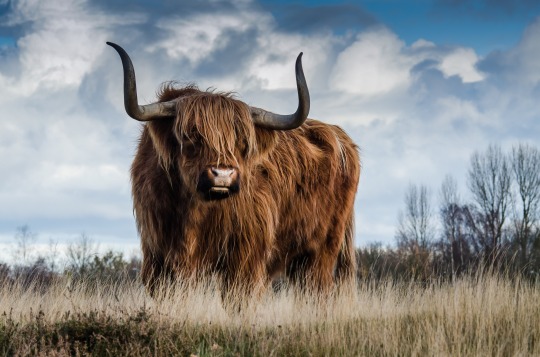
This year, starting mid-May, we got a taste of Uranus in Taurus and what kinds of things we can expect until the next sign change into Gemini in 2025. Currently, Uranus has retrograded back into Aries, giving us our last opportunity to stand out and make our own unique mark on the world with this pioneering Aries influence before the planet moves into Taurus again in early March 2019, where it will stay for the next 7-10 years. Aries is the first of the zodiac and is all about the importance of self, so it's no coincidence that this Uranus in Aries cycle birthed the beginning of selfie culture we know today, as well as many activist groups and rebellions.
Uranus is the planet of change and innovative ideas, and it doesn't match well with Taurus, a fixed sign, who hates change and clings to all they know. Taurean themes such as food, music, art, and finance may experience radical changes, likely involving technology as well, as Uranus rules technology and science. In the first few months of Uranus in Taurus this year, we have already seen some of these themes manifest, as I'll discuss throughout this article. First, for a little history lesson.
The last time Uranus was in Taurus was during the end of the Great Depression and the beginning of World War II. As we know, these events directly affected the world of finance, and the unemployment rate in some cities in the USA was higher than 80%. In June of 1935, F.D.R. took action to attempt to save the economy with the "New Deal" plan, which was a number of programs aimed to help achieve financial stability (which is a major Taurean theme) in America once again. These programs were assembled primarily by Frances Perkins, the first woman to serve in the Presidential cabinet. Also in 1935, the Social Security Act (which Frances Perkins was also very involved in, and I'll talk more about why she is important later) became law, and the first social security payments were made the following year. In January 1938, the Dutch government began obligatory unemployment insurance as well. There is a pattern here, where the Taurean themes of finance and security were shaken by the unstable influence of Uranus. A game about fluctuating finances was even released during this previous Uranus in Taurus cycle - the ever-popular Monopoly board game! Interestingly enough, during the current Uranus in Taurus cycle, in 2018 Hasbro released a new and updated version of the Monopoly game for the millennial generation.
Beyond finance, Taurus also rules farming and food production, so there were many important events happening in this area too, during the last Uranus in Taurus transit. For example, many countries began rationing food supplies around the time World War II began, including bread, sugar and cheese. In July of 1937, SPAM lunchmeat was first introduced to market shelves, dominating the industry because of its availability, affordable cost, and enduring shelf life. This is an example of a Uranus in Taurus development involving food. Another wonderful example; in May of 1940, the first McDonald's opened in California, revolutionizing the world of food, speeding up the process under the influence of Uranus, and thus becoming what we know today as "fast food." The first food stamps were also issued in 1939, during the last transit of Uranus through Taurus.
In our current Uranus in Taurus transit, I've noticed that there has already been a series of archaeological discoveries (Uranus rules discovery) related to food. On July 17 of 2018, archaeologists in Jordan found the ancient remains of baked bread from 14,400 years ago. Then on August 18, archaeologists found the first ever cheese from Ancient Egypt. And finally, in September, archaeologists found the oldest known brewery and the remains of ancient beer in Israel. (While Neptune and Pisces rule alcohol, Taurus rules the grains that beer is made from!) Interesting that we seem to be looking backwards at food so far during this transit, when Uranus typically urges us to move forward. But there is still plenty of time, and I'm sure there will be some amazing inventions relating to the food industry over the next 7-10 years.
In the world of the arts, there were many major events during the last Uranus in Taurus transit, as Venus rules Taurus, which rules art and music. To begin, in 1936, Billboard magazine published its very first hit music chart, revolutionizing the music industry. Then in 1939, Billboard introduced the first country music chart, or "hillbilly" music chart. In 1940, they released their first singles records chart. Vocalists (Venus and Taurus rule the throat and voice) like Frank Sinatra and Marian Anderson began to emerge in music during this time as well, and dominated the industry.
In fashion, nylon was the latest fiber innovation, patented in 1937, then announced the following year. By October of 1939, nylon stockings were available in stores for the first time. Also in 1939, Glamour magazine began publishing issues. This is significant because Venus rules beauty, and as the ruler of Taurus, it is involved in this transit. Venus also rules perfume, and during the last Uranus in Taurus transit, Coco Chanel brought us the famous scent, Chanel no. 5 in May of 1941.
Towards the end of the last Uranus in Taurus transit, in 1941, the National Gallery of Art opened in Washington D.C., another expression of the Venusian influence of Taurus. I noticed also a surge in highly successful cartoons and animations during this Uranus in Taurus transit. Uranus rules animation, cartoons and technicolor television, and Taurus rules the arts and beauty. These themes came together to produce amazing works of film that we still treasure today. This stream of cartoons included three of the very first full-length Disney animated films, Snow White and the Seven Dwarfs, as well as Pinocchio and Dumbo. Interestingly enough, during the current Uranus in Taurus cycle in 2019, Disney will be releasing a new version of the animated movie, Dumbo, originally released in 1941. Also among these successful cartoons were characters like Bugs Bunny, Tom & Jerry, and a handful of comic book heroes like Superman and Batman.
Though not a cartoon, I'd also like to mention the release of The Wizard of Oz in this category, relating to technicolor television. While technicolor had been around since 1917, when Uranus was in Aquarius (which makes sense, being a Uranian association), The Wizard of Oz brought more attention to technicolor films, highlighting their artistic beauty (there's the Taurean theme). That is what made the release of this movie a big deal.
In art-related discoveries (remember that Uranus rules discovery), the last Uranus in Taurus transit brought us the incredible discovery of the Lascaux Cave Paintings in France - also known as The Hall of The Bulls, because the paintings feature many ancient bulls running across the walls of the caves. As most of us know, Taurus is the sign represented by the bull, so I found this to be extremely fascinating. Also in the current 2018 Uranus in Taurus transit, the oldest known human drawing was discovered, and the first work of art produced by artificial intelligence sold for $432,500.
Scientific discoveries during the previous Uranus in Taurus transit interestingly include the development of antibiotics used to fight strep throat. Taurus is the ruler of the throat, specifically, so this discovery stood out to me. The same year, in 1936, the first radioactive substance (radium E) was produced synthetically. Uranus rules radioactivity, and Taurus manifests physical results. In regards to natural science, in 1936 we saw the formation of the National Wildlife Federation, as well as the extinction of two unique species in the next two years - the thylacine and the Balinese tiger. Uranus rules exotic animals, and being in Taurus, a sign of manifestation, Uranus can suddenly wipe entire species out, as well as potentially bring an unexpected revival. In 1938 in South Africa, we discovered the first modern coelacanth, an ancient fish long thought to be extinct.
Some of you might be excited to hear, in my honest opinion, (and I know this saying is kind of cheesy) the approaching future WILL be female. Uranus rules activism and feminism as well, and Taurus is ruled by Venus, whose planetary symbol is literally the symbol of feminism. If you're an astrological skeptic and need more than that, let me explain... In 1919, when women received the right to vote, Uranus was in Aquarius, the sign of activism where it feels most at home. This transit created several workers unions and women's political groups, however it also created the formation of the Nazi party in Germany and the Fascist party in Italy (Uranus and Aquarius also rule fanatics and extremists). Later, when Uranus transited into Taurus, we began to see physical manifestations of the radical ideas that were birthed during the transit of Uranus through Aquarius, because Taurus represents the physical world, and makes things into a tangible reality. One example of a manifesting idea being the physical Nazi takeover of Germany by Adolf Hitler. Another example, a physical manifestation in women's rights, in 1938, a federal judge lifted the ban on birth control in the US, making it legal to use and obtain contraceptives through medical instruction. During this current Uranus in Taurus transit, we may have to fight again for the right to birth control, as Planned Parenthood and abortion are under attack by the current administration. Also, in 1933, while Uranus transited through the end of Aries, we saw the first woman appointed to serve in the Presidential cabinet (Frances Perkins, mentioned in an above paragraph). This woman had a major influence over the US over the next decade, while Uranus was in Taurus, and fought for financial reform to help save the American economy. The recent midterm elections interestingly enough were held on November 6 this year, the same day Uranus moved back into Aries, the sign of firsts, from it's little preview of Taurus. Already in 2018 we've seen records being broken by women in politics, as well as a few firsts, and we can expect to see more of this as Uranus continues on its journey through this feminine sign. We can also expect to see more breakthroughs made by these new female leaders, like the "New Deal" by Frances Perkins in 1935.
As I mentioned earlier in this post, art and technology will likely blend in new ways during this upcoming transit, as Uranus rules technological advancement and Taurus rules artistic sensitivities. We will likely see artificial intelligence creating more art and music, maybe more commonly too. We could also see a rise in electronically made music in the music industry. As for fashion and other forms of art, we can expect these subjects to lean more towards the lavish side this next decade, Uranus being in the sign of fine perfumes and silks. Pastels and florals, ruled by Venus, have already reached the world of fashion, hitting the runways right as Uranus began it's recent transit into Taurus. Unique earrings and statement necklaces are also growing in popularity already, beginning with the Uranus in Taurus transit. Taurus rules the ears and throat as well as jewelry, while Uranus brings uniqueness to the table.
New technologies will have a big impact on the food industry somehow in these next 7-10 years as well. Technological advancements could be made to change the way we feed our massive population, perhaps giving us greener solutions to environmental issues regarding our wasteful food production. Financial institutions globally may collapse or prove unstable, and new financial reforms will likely be put into place to replace these failing establishments. Dictators may take over or be overthrown, rebellions and uprisings may start around the world, and unfortunately, we may lose a few beloved species on our endangered species list, namely the Sumatran rhino. I'm bringing these creatures specifically up because just a few days ago, an article was published announcing that one of the last remaining Sumatran rhinos was just captured from the wild in an attempt to save the species. A few other species to be watched this decade are the Sumatran elephant, multiple species of tigers, two kinds of gorillas, Sumatran orangutans, as well as a long list of others. There is a very real chance we will lose these creatures to history forever during this transit. The choices we are making as a collective society in the present and very near future will directly affect the environment around us, and Uranus in Taurus will make sure of it. The fight to save our planet will likely be center stage while revolutionary Uranus is in the green earth sign of Taurus, and with the neutral and uncertain nature of Uranus, we may see some surprising and unexpected ecological victories as well.
With so much change in the world, it can be easy to feel overwhelmed by it all. Just keep in mind that the planets are always in motion, and therefore change is constant. Though we may see themes emerge and repeat themselves over time, the end-all law is that we are always evolving, and evolution is the key message of Uranus.
I hope you enjoyed this article!
Check out my Ko-Fi below to leave me a tip!
ko-fi.com/andromeda_sapphire
#astrology#uranus#taurus#astrology readings#astrology blog#transits#astrology transits#uranus transits#witchblr#astro witch#cosmic witch#me#mine#blog#astrologer
15 notes
·
View notes
Text
Not All of Me Will End [1/3]
Summary: Nothing remains of her but what must be left behind.
Tags: Character Death, Cancer, Tragedy, Angst, Bittersweet, Post-Canon
Pairings: Royai, Edwin, Havolina
AO3 ff.net
who lives
Smoke gathers beneath the ceiling’s blackened tin tiles—a match for her mood, and for the roiling green clouds that gather low over the city. Riza could add a little cirrus stream of her own, but all she has is the cigarette holder to tap against her lighter, ivory clacking on silver again and again. They’ve been waiting nearly an hour, stiffly side by side and still in uniform, as though either of them will be going back to work afterward.
“What’s the point of rank if I can’t use it to get anywhere?” Roy sighs, pulling out his pocket watch to check the time, and he smiles at her. He doesn’t know the way that she knows. “Are you alright?”
“Of course,” she says. “I’m sure it’ll only be a few more minutes.”
A wave of vertigo ripples upward between her eyes—and the half-filled lobby blurs into a slumbering beast, churning, burbling, gasping with thickened lungs. The steady heartbeat of patients marching the corridors and tangled in their IV lines, the thrumming of each slippered footfall that plays her broken nerves to insentience—she calms by pressing her fingernails deep into her palms, carving long purple furrows across the spongy flesh.
The nurses chitter like insects across the floor, hiding their oddly jointed limbs beneath dark blue dresses, pressed leather boots, starch-white aprons crossed over the back. Hats pinned to hair carefully pulled into uniform curls—such dreadful little halos. One of them approaches, with black eyes and pin-pricked red lips and a slithery grayed tongue.
“Captain Hawkeye. Doctor Hauer apologizes for the delay. He’s prepared for you now.”
Roy’s hand on her back is not subtle or standard politeness—he has caught her twice in the last month from falling back down the stairs. Something in the exertion of climbing would send a sheet of foggy blackness across her vision and then, just as her fainting spell during the commemoration parade, Riza would groggily wake to find herself propped up by his steadying arm. Even now they are keeping to a slow pace, passed on every fifth step by an annoyed orderly or harangued custodian.
Doctor Hauer’s name is at last set on the glass of his door, in careful white etching—he’s new from the north, highly recommended and with a fellowship purchased directly from the führer’s considerable coffers. At least, from all this meaningless mess, Central City Hospital can boast of retaining the best diagnostician in the country. He won’t look like much in print, but she can imagine, somewhere in a distant memorial garden, his stately stone glower presiding over a mossy plaque dedicated to his advances in various medicinal sciences. Such men are almost never properly paid tribute in life, so she can find some comfort in knowing she probably wouldn’t have lived to see it regardless.
“I’m sorry,” he says, no preamble, no offer of tea, “but it is exactly as we feared.”
“Cancer.”
“Yes.”
Riza nods. She knew, in all the ways that Roy did not, and his fingers tighten painfully around hers.
“Are you certain?” he asks.
“I spoke to my colleagues in West City and East, and they both concurred with my initial reading. The shadowing on the film clearly indicates wide-spread metastasis.”
“What does that mean?”
Hauer glances at Roy and then back to Riza. She can, to some extent, respect his desire to keep her the center of the conversation—but it feels so unnecessary. Like the broken beaks of a thousand furious birds, rain begins to peck at the glass behind the good doctor’s head.
“Although the size of the mass in your lungs leads me to conclude that it is the originating site, your previously described symptoms—dizziness, hallucinations, blackout spells—strongly suggest that there may be a mass in your brain as well.”
He points, with alarming accuracy for not even bothering to turn his head, at the tacked-up transparency of her chest. The closest she will ever get to witnessing the true complexity of her own desiccated husk, save for running a knife beneath her ribcage and peeling back what flesh is found there.
“It also appears to have reached your lymph system. We could draw blood to confirm the presence of malignant cells moving throughout your body, but at the current rate of growth, in a matter of months…”
A twisting grimace.
“As they say, truth will out.”
“Is that—is that how long…?”
Hauer’s eyes are a brackish-green, painted with flecks of yellow by an unsteady hand. In one eye, the sclera holds a streak of bright red, and the pulse it hides could almost be visible, she thinks, by changing the angle of her observation. His left eye flickers first, followed by the right a quarter-millisecond after.
“It’s difficult to say with any accuracy. The disease process is unique to each person.”
“So then what’s our next step?”
She is not trying to memorize this moment or even Roy’s face—she is merely observing the cool milky sheen of his skin, the youthfully short lines bundling above his brows, the click and clack of his tongue and teeth as he seeks a futile reprieve. They—Hauer and Roy, and not Riza, who folds up her hands in her lap and watches Roy’s face without feeling the slightest change in her own—discuss medication and surgery and radium therapies with such naive hope cutting their lips to ribbons.
“No,” Riza says. The birds have left the window—for all its crescendo, the storm was brief and will have left only a discomforting haze to line the streets and sidewalks.
“Riza, there’s still options—”
“Not for me.”
“But they’ve had success—”
“In skin cancers. And most of the patients went on to develop a different cancer and died anyways, after a few years.”
He wants to protest, his eyes a pair of open wounds twisted wide by the gears of coming grief. The clouds have cleared from his side first—he sits in a shower of sunlight and reaches to her, delicately seizes her hands and pulls them to his lap. They stand sharp as plucked feathers against the dark wool of his uniform.
“I read the same studies as you,” she finishes.
“But it could work.”
It is difficult to explain the logic of what remains so… obvious. Hauer has withdrawn, content to study the bleed and retain his commentary. Riza, in a half-remembered instinct for solace, runs her narrow thumbs across the wide expanse of Roy’s palms.
“Cut me open,” she says, unblinking, by force of love and misery willing the certainty to bridge the empty air between them, “and scoop out what they can. Then weeks under one of those awful lamps or even worse—a tube of radium sewn up inside me until it burns through.”
He shakes his head as she speaks—his imagination is well-stocked with atrocity and no doubt illustrates each word with a facsimile of what its truth might be.
“Is that what you want for me?”
Ruined by all of it—torn open and shredded by the indifferent abyss. She sees him as one might see a lone telegraph pole with its lines all cut loose, fading fast into a horizon that welcomes no minute alteration. He squeezes her fingers, trying to coerce heat from his calloused skin into her. He speaks very quietly—not a whisper, but an inability to draw sufficient breath for each word.
“I want you to live.”
She smiles, somewhat, tempering the cruelty with a cold sigh and a tremor which passes, without origin or end, between their joined hands.
“Well,” she says, “I’m not going to.”
Roy’s car has broken down again, so they take a black taxi back to Central Command. The driver seems to sense their disquiet and leaves the divider up, assuming possibly that they have a need to talk—but they only stew in a long silence. The rain begins again, and ends, and then restarts and finally quits the greened sky for yellowing pastures somewhere south.
“Why didn’t you tell me about the hallucinations?” Roy asks. He speaks to the closed window, hands curled to fists in his lap, brow knit, frowning, eyes darting from face to face when they stop near a crowd. He will want a solution from his frustration and will find nothing.
“I don’t know,” Riza says. “It only happened a few times. I thought sometimes it hadn’t happened at all.”
Anger rolls from his shoulders in cutting waves. It radiates, and she wants to lay her hands along the span of his back, to absorb his heat and make it her own, to become the yawning, roaring void that has opened inside him: a little well of sadness, which seeks an ocean to drown it.
“I’m sorry.”
Their attendance at Grumman’s table is required, and she tells him immediately, wishing no delay to the plans that now must follow. He rages, of course, stalking the edge of his favorite Aerugian rug as he narrows his sights on the appropriate prey.
“I built that hospital!” he snarls, expelling foul breath with the lie. “Every brick belongs to me, and if they think they can reject my granddaughter for treatment—”
“I don’t want treatment,” Riza says, turning her fork to cut into a fig. “I made the choice.”
He softens to speak to her, just as always—she is glad, again, that he had no choice but to give her up as assistant. Familial affection is smothering at any distance.
“But, my dear heart, you’re far too young to give up.”
“No, I’m not,” she says, arranging her plate and cutlery for the ease of the maids, who will sweep the room spotless once they’ve gone through to the library, each night making such quick work of erasing all traces of their disorderly occupation. “I’m going to die.”
Grumman rages through the nightcap, malcontent as always with realities outside his making. Roy won’t defend her outright, but he’s far enough to her side to ignore Grumman’s attempts at alliance. Riza nurses a tiny glass of port, happy to let silence be her best answer.
She is the last to leave the library but stops short of climbing the first step. Roy will have found a room for himself somewhere in the east gallery—still trapped by the old etiquettes. They will not share a bed under this roof, which seems a trifling thing and yet—she can almost relish the possession of feeling again—some silly part of her is hurt. No matter that they’ve made love before, or that long before the tendrils of this nightmare began to tug at her ribcage, they had made such public promises.
Grumman had demanded an announcement and then disseminated one himself, when neither of them proved obliging. An alert of required celebration, and the drab party that followed—she thinks she still can smell the smoke of dusty candles and the flowers left too close to open flame. Smoke like meat, like the rabbits she hung inside that big hollow oak and the door she’d made of bark to cover, to pack with clay and come back later when Father lost his patron and they’d gone three weeks without anything but bread and foraged apples—
Riza curls her fingers around the ugly finial at the base of the bannister, feeling the weakness drain through her grip. There is no smoke here. The engagement party was months ago, and all its guests have gone home to sleep. Very carefully, she slides down to sit on the last carpeted step.
This is not the main staircase of the house—the grand incline that sweeps from the gilded foyer up to the narrow walk which runs from the east wing to the west—but a disused passage back to the kitchens. The sort of walk servants might have taken fifty years ago, slipping surreptitiously from their rooms in the attic to the basements. What need did they have for decoration? This landing holds a vase long empty of flowers, a dusty candelabra, and an overly-ornate bureau. And overseeing all, the painting.
Liesel Grumman, aged sixteen years, preserved and pickled in a brine of oil pigments and glaze. Her hair is styled in loose curls, her narrow body draped in white, and her hands are clasped primly on her lap—not one on top of the other, but palm to palm. Her eyes are blue, her throat bare, and her skin smoother than the brushstrokes that conjure it.
But the varnish is yellowing. The painting has gained a haze, and the corner of the frame is chipped of its gild. Riza shuffles herself forward along the carpet, not quite steady to stand on her own, until she is kneeling at the base of the bureau, looking up into her mother’s eternally averted gaze.
Berthold had had nothing to say on the subject of his late wife—other than that she was late and his wife—and Liesel had left precious few letters for perusal. Vaguely, Riza remembers a cardboard portrait of their wedding buried somewhere deep in the cellar: a matching pair in black, Liesel smiling gently and Berthold scowling.
If there had ever been anything like a journal of hers, Grumman never spoke of it. Despite the elopement which had separated them forever, he seemed to still think of his daughter as loyal, darling, sweet, pure, incorruptible—but her gaze in the painting is more dead than demure. The bureau is weighted and steady as Riza ascends, leaving her shoes to topple in the carpet, her elbows digging into the rough panels on either side.
Her eyes are a detached, icy blue. Round, large, surrounded on all sides by sclera barely distinguishable from her snowy white skin. Riza presses gently on the prick of her mother’s painted iris, flattening the peak. She didn’t really look like this. She never could have—and anyway, if she did and Riza knew, the memory is gone now in a foggy haze of black.
It is happening more and more—things Riza knew not because she could conjure the memory itself but because the vague shapes of it still threaded themselves in and out of other recollections. Impressions of a movement, of a tree weeping leaves into a river, a negative space between thought and thought, marked out only by its absence. It’s creeping closer as well, swallowing whole days and nights of solitude. She finds herself frantically scribbling out every thought that might someday find importance, before they can flit away from her fingers.
And what she does remember still—played out before her helpless gaze like a zoetrope glued to her face. A whirling vortex that melts to a view of Eastern Command, where Grumman brought her to the painting before even telling Riza who she was. Who she was—peering down from above the fireplace, amber-trapped, perpetually pre-elopement, pre-death, pre-decay, prevented from any comment on her own current condition—and he leered like a supplicant, offering up no sacrifice worthy of the penance sought in such adolated immortality.
Riza slides from the bureau unsteadily, spiked with sudden fear that the world has shifted itself while her back was turned. And it has—the shapes of Grumman’s old sitting room recede, bleeding backwards into carpet and empty wall and worn step, and her own shoes, kicked over and empty. She can’t remember how to get back to her own room, or what twists and turns will take her to where she is supposed to be. This isn’t home—it’s a stop in the pilgrimage to the end, and she sets her left hand on the wall, ready to resume.
By morning, Grumman has attained some level of acceptance. He is the last to come down for breakfast, white-faced and gray-shadowed, and he takes his seat without bothering to bring a plate.
“I’m going to see General Armstrong today,” Riza says. A maid woke her in the parlor at sunrise and lead her back to her room, where she slipped uneasily behind the mask of a dressing gown and slippers.
“You don’t have to,” Roy says, as his spoon scrapes across the bottom of his cup.
“I should,” Riza replies. “I want to.”
The grapefruit tastes like nothing, but she still winces. Grumman’s butler, with a stare of gravest concern, brings the old man some eggs and sausages, which he does not touch.
“When you return,” he says, barely managing to unfold his napkin, “we might discuss hiring on a nurse or two. To help out.”
“There’s no need. I’ll be going back to the house next week.”
His lip curls up like a burning leaf.
“You can’t possibly—”
“It is my home,” Riza says steadily.
“Wellesley is too far.”
“I had a telephone line installed. The tenants left last month.”
Roy’s stare shifts up from the newspaper he hadn’t been reading, fixing on her—furious, offended, incredulous. He must have thought they were in this together. Riza stares back, her mouth flat as her mood.
“I’m going back to the house,” she says. “There is no argument.”
“Riza, please, you must be reasonable about some of this—”
“Every Hawkeye,” she says, slow and deep and clear as a tolling bell, “for two hundred years was born in that house, and now the last of us will die there.”
Grumman’s fogged glasses clink against his spoon, and he sets his fingertips against each eyelid.
“I wish you would stop saying that word,” he mutters.
Roy waits at the bottom of the stairs with her dress coat—undeterred. They have covered the subject of stubbornness extensively in their time together, so she just sighs and turns around, allowing him to slip the sleeves up her arms and slowly pull each button through its slit. Her whole uniform has been freshly mended for this: its last exercise in the sun. The piping is bright white, the braids are neatly aligned in rows, and each metal pin of rank and office and regiment sparkles with shine. He keeps himself to civilian clothes.
His leave of absence has no doubt been expediently approved, or sits atop that neglected pile of forms awaiting the führer’s signature. Another piece in its waiting place.
They could take Grumman’s car, but she doesn’t want Armstrong to be immediately defensive. Roy orders a cab, and she almost wishes it could be the same driver as yesterday. This one is fine enough, although he smiles with too many teeth. Riza dislikes him instantly and wants, viciously and without cause, to see him frown instead, thinking to dim his irreverence with a remark about her condition. But that was her father’s way, never hers, and the impulse passes.
Roy keeps to his side of the bench when she steps in and settles against the door. She is beginning to miss him, even inches apart, and soon he’ll have his chance to miss her as well. Without hesitation, Riza slides her hand across the polished leather padding and slips her fingers between his.
He looks at their hands first, and then up to meet her gaze. She’s still half-sure he’ll pull away. There is nothing to say to the darkness growing behind his eyes.
The Armstrong estate suffered yesterday’s rain just like the rest of the city—every time, Riza expects it all to be unblemished and opulent, recently emptied of party guests and yawning for new attention. But instead, it is a quiet house hunched up and drawn in, dripping from its cornice like a near-empty wine bottle, unstoppered and tipped on its side.
There is a butler to let them in, and another butler to announce them. Having no business but escort, Roy is shown into the library, and Riza takes the next step without him.
Maybe they’re not all butlers. Three of them stand against the wall in the stately dining room, livery pressed to sharp creases and stares scalding. There must be one table for parties, and this smaller table for every day. Lieutenant General Armstrong sits at the head, newspapers spread on her left and correspondence unopened on her right, with her picked-over breakfast plate neatly in the center. Her brother is also on the right, sitting far down the table—but no doubt as close as she would allow—and he stands when Riza enters.
“Madame General, Captain Hawkeye to see you,” the door-opening non-butler says, bowing deeply and backing from Riza’s peripheral vision before returning to upright.
“Good morning, Captain Hawkeye,” Alex says. “Would you care to join us for breakfast?”
“Thank you, no—I’ve eaten already.”
“Is there some urgent matter?” the general interjects. “I didn’t send for you. I thought you were off planning your betrayal of a wedding.”
She does not look up from the newspapers, squinting to follow her forefinger across the narrow print. Alex gives her a look of almost matronly disapproval.
“Olivier doesn’t mean that, Captain. We’re both very happy for you.”
“Don’t speak for me,” she snaps, now lifting her coffee for a sip—obstinance. Riza used to find that horribly endearing in a commander. “The captain’s choice in romantic partner has already been reflected in her annual review.”
“Olivier, don’t be impolite.”
“I wonder if I might speak to the general alone,” Riza says. Her knees are beginning to strain, and the heels of both feet grow hot. She might have laced her boots too tight in her haste to leave.
“Of course, Captain. Please excuse me.”
Alex nods, rises, and ushers the butlers from the room. The general turns to her correspondence, unfolding a concealed pair of reading glasses and setting them on the end of her nose.
“I can’t believe the cheek of you bringing that worthless cur into my library.”
She loves scolding over a meal. How many bottom-rankers had Riza brought to her table at supper, every one of them knock-kneed with hunger-strengthened fear, to receive a lashing of words no less capable of stripping flesh from bone than the stiffest leather strap?
“It’s bad enough you’ve accepted him—and now he follows you around everywhere like a sick dog, so eager to throw his victory in my face.”
She points with a butter knife.
“You know I take this all as a personal offense.”
“I know, ma’am.”
But what could she do about it? Her refusal would have changed nothing more than—distance? Perhaps Riza would never have gone in to check. The air around Briggs is so thin, and she’d been teased for her inferior Western lungs more than once. Perhaps one morning an enlisted aide would have been sent to her bunk, to rouse for inspection, and she would have just been found, blue-lipped and silent forever.
“Don’t tell me that he’s gone and knocked you up. The thought of that idiot propagating—”
The sting is surprising.
“I’ve said something cruel, haven’t I?”
Riza opens her eyes—surprised again, to find that she had closed them. The general has set aside her letters and her papers and hidden once more the glasses she wants no one to know of, and she watches Riza with her hands folded on the edge of the table.
“I’m sorry,” she says. “It’s serious. And I’ve made some mockery of it.”
The overly-familiar upward rush of illness—Riza is standing close enough to the table to grip the back of a chair before she can completely collapse.
“Excuse me, ma’am, but I’m afraid I must sit in your presence.”
The general returns to her own seat slowly, too startled to conceal her concern. Beneath the table’s edge, Riza’s hands are shaking.
“What’s going on, Captain?”
“I came to submit my resignation, ma’am.”
She nods. She might be angry, disappointed, annoyed—but none of this shows in the knit of her brows.
“And I can’t refuse. No matter if I wish I could.”
“No, ma’am.”
“Is it—is there anything—”
A fragment of a generous offer. A lilt in her voice, a downward shift in tone, maybe even something close to a tremor. They are not—will never be—anything resembling friends. And there is such deep relief in it.
“But I’m sure the führer’s exhausted every possible avenue—to confirm…?”
Riza says nothing. The general nods, sliding into her earlier pose, back rigid against the chair, hands shuffling through the correspondence pile, eyes averted—but Riza knows she is not done just yet.
“You’ll stay here, with your grandfather?”
“No, ma’am. I own a house in the Western District. We’ll go there in a few days, when the rest of my affairs are settled.”
The room has reoriented itself around its own wavering silhouettes. Riza can stand without shaking, and she sets the chair back against the table with a muffled click of polished wood on wood. She can even manage parade rest, fixing her stare on a single flower carved into the painting frame directly above the general’s head.
“I’ve briefed Lieutenant Falman already on my projects and as specifically as possible on expectations in serving as your interim adjutant.”
“There will never be an equal replacement.”
Riza’s fingernails bite briefly into the flesh of her palms.
“Thank you, ma’am.”
“I suppose that’s it, then. You are dismissed.”
She never looks up. Riza could imagine a slight twitch passing through the general’s occupied hands, but why bother? This is almost exactly what she wanted.
Yet another butler meets her outside the dining room. Roy has broken the containment of the library, and he does not smile at her return.
#riza hawkeye#roy mustang#royai#fmab#hlwim fic#not all of me will die#long post#i'm trying out posting this fic on tumblr as well as the archives
25 notes
·
View notes
Text
SEMA is a hard show at which to properly appreciate cars. On one hand – it’s a show overflowing with some of the best builds you will see all year. On the other hand – it’s that same overflow that makes it almost impossible to keep your wits about you. It’s almost too much of a good thing. In a sea of thousands of cars, I feel like some inevitably get lost. The great thing is: The cars that are truly memorable, the cars you are talking about weeks and months after the show… are cars which rise above the temporary flash-in-the-pan Instagram fame. Some cars deserve to be immortalized. More than digital noise or passing fancy, they draw their inspiration from the timeless. The classic.
This 240Z certainly qualifies as one of these cars. While it has some innovations and forward thinking design elements, it also honors the tradition and legacy of Datsun’s Z car heritage. Car owner Dennis wanted a Z that could be as menacing on the street as it was on the track. In looking to manifest his dreams into reality, he was fortunate enough to meet aspiring builder Kyle Kuhnhausen. Kyle is a fresh out of business school automotive entrepreneur with a penchant for metal work. Ok, more than a penchant… he has a gift. From the paint scheme to the heavily gusseted cage, this car is well thought out & beautifully executed. How well executed? Well, when we talked he made sure I knew that the LS swap was a place holder engine until they built something truly epic for under the hood. WOW. Some place holder.
Let’s take a moment and revel in my three favorite aspects of this car.
First)
There is the paint scheme. Nimbus Grey (or battle ship grey in some parlance) has to be my personal favorite hue on show cars. It’s rich, it allows shadows to adopt a deep dark over tone, and light reflections to be silvery & pronounced. Every truly beautiful design looks amazing in this color. So… win number one? CHECK! The Peter Brock homage striping is as evocative and respectful of the Z’s motorsport heritage as it is a tasteful modern touch of racer bravado. I dig it. Those famous side stripes actually start on the hood at the vents and then cascade over the fender and down the side forming the Brock stripes we are all familiar with. A killer design cue that is at once forward thinking and period correct. Nicely done.
Second)
Let’s talk about that metal work. The Aero is mean, functional, and gives the car a seriously provocative stance. What’s more – it’s designed to just rip/break away cleanly in the case of a momentary lapse in driver skill (for example paying a visit to say, China Beach at the end of the straight at Mid Ohio). Well played Kyle, well played. However, as fantastic as that aero is, it is nothing compared to the beautifully executed roll cage. Meant to be a street car that can participate is serious track time… it had to be a car from which Dennis could easily get in and out. Kyle kept the safety high by fabricating one seriously artful, yet stout, fully gusseted integrated cage. Take a few moments and look at the cage in this car. I have severe race car envy. My race car has race car envy. Seriously. It is so good that it easily merits adjectives like superlative, excellent, exemplary. Bravo.
Third)
And this is one where so many cars sort of take a pass… the gauge cluster. When a car has track day toy duties, it’s easy to just pick up a digital display, mount it up, and just call it done. Not in this car. The cluster in this car is 13 individual pieces of aluminum lovingly hand shaped into what you see before you. It honestly called to mind some of the extreme and bespoke modern interpretations currently en vogue built around the Porsche 911. The Singer cars being the most notable, they take an air cooled 911 and massage every aspect of the car… and polish, preen, & refine it until it is absolutely jewel-like. The perfect 911. Well, that’s where this Z took me. It’s like a really nice 240Z… only polished to the highest possible degree. Everywhere you look there are tasteful touches. This instrument cluster exemplifies that. The angle at which it is canted toward the driver, the alignment of it inside the MOMO wheel. It’s absolutely glorious.��
So yeah, this car is one of the highlights of last year’s SEMA show. It truly was. Bespoke modern takes on past classics are hot right now. Cars like the Singer 911s are fetching 500k and more per unit, so it makes builds like this kind of a serious proposition. Get it right and the value and classic status is legitimate. In the end, Dennis can drive this car on the road or the track, confident in the fact that he found the perfect enthusiast to execute his vision. And he can rest well in the fact that he’s now driving the Singer of Datsun 240Zs.
InZanity 240Z
CHASSIS
1972 Datsun 240z shell
10-point fully tig welded roll cage featuring flared hole body tie-in gussets
Lower jacking & towing points welded to bottom of main cage shelfs
Every unibody seam is fully stitch-welded inside & out, and seam sealed
All top strut mounts replaced with camber adjustable heavy duty plates
Pre-load adjustable tie-rod strut braces featured in engine bay
Tig welded fuel cell cradle with integrated rear center mount tow hook
Rear sub-mounted battery with remote charging points and kill switch
Custom tig welded engine & transmission mounts. Optimized center of gravity
50/50 weight distribution
Bolt-in aluminum transmission tunnel stiffeners / driveshaft hoops
Integrated scraping points for oil pan protection
BODY MODS
Trackspec Motorsports heat extracting louvers on hood & front fenders
Front fender-exit side exhaust with custom alloy diffusing louvers
Rear rockers clearanced for functional rear brake vents, and lowered 1.25”
Fender & rear emblems shaved
Antenna & side marker lamps shaved
CNC billet aluminum laser engraved KMC tail lamp insets
CNC billet aluminum quarter panel vent emblems featuring modernized “Z”
Rear bumper & mounts shaved
Symmetrical rear body pan recess, opposed to unsymmetrical stock recess
Front bumper shaved & swissed with dimple die punched holes
Reinforced rear hatch for functional spoiler mounts
Rear quarter panel turbulent air extraction holes with alloy bezels added
Wide “ZG” style flares, adding 6” of width to the rear fender wells
All body gaps cut, welded, and staked.
Shaved hood springs & streamlined hinges
Show grade bodywork
One-piece front & rear windscreen gaskets
POWER
GM 2004 LS1 engine with T56 6-speed manual transmission
Modified & ported 1.625” primary headers ceramic coated in gold
Bespoke 2.5” Fully pie-cut and tig welded exhaust with front X-pipe (167 weld joints)
Dual 8” sectioned Magnaflow Corvette style mufflers mounted in front wheel wells
Improved Racing 180 degree oil cooler thermostat with 400hp Setrab cooler
Holley Coil on Cover valve covers
Radium Engineering FCST fuel cell surge tank and full fuel system
Vibrant Performance –AN fuel lines
Modified stock throttle body with Lokar stainless throttle cable
Custom 4” aluminum air intake with K&N filter outside engine bay
Aluminum crossflow radiator with 16” Flex-A-Lite electric fan and custom shroud
Modified Hurst short shifter with KMC integrated transmission fluid top-fill
Centerforce single disc clutch
ACT Clutch Prolite lightweight flywheel
Custom one-piece driveshaft
Infinity Q45 R200 differential with VLSD limited slip unit and 3:54 final drive ratio
Nissan Armada CV axles
BRAKES
6-piston Wilwood front calipers & 4-piston Wilwood rear calipers
Fully functional ram-air 3” brake ducting to all 4 corners with custom caliper hats
ASD Motorsports hydraulic 16” e-brake system with braided -3an lines
Wilwood billet master cylinder with modified vacuum booster assembly
Optimized pedal box with reduced weight and improved pedal placement
3/16” Stainless hardlines and -3an braided flex lines
Wilwood proportioning valve with hidden custom mount
Remote Wilwood proportionating valve in-cabin adjustment knob custom retrofit
Custom aluminum master cylinder heat shield
SUSPENSION
Full Arizona Z-Car “Track Pack” billet aluminum adjustable suspension
Arizona Z-Car struts with coilover adjustable springs, modified for tire clearance
Apex Engineered bump steer adjustment kit and high steer knuckles.
Full polyurethane bushings
Modified front crossmember for improved roll center
ST Suspension front & rear sway bars with Energy Suspension polyurethane bushings
5 Lug converted hubs with front Wilwood spindles
ARP chromoly extended wheel studs
Stitch welded and reinforced front crossmember
AERO
Custom HDPE adjustable front air splitter with alloy radiator and brake dams
Custom HDPE adjustable rear diffuser with jacking point & air straighteners
Custom HDPE 6” side splitters with exhaust vent & rear brake vents integrated
Aluminum tunnel underbelly, mostly flat under entire car
Pitch adjustable 3-piece rear deck spoiler with Ringbrother’s micro hinges
ARP carbon fiber micro mirrors
Lexan headlamp aerodynamic fillers
4 Piece aluminum radiator ducting with cabin air ducts integrated
#gallery-0-33 { margin: auto; } #gallery-0-33 .gallery-item { float: left; margin-top: 10px; text-align: center; width: 33%; } #gallery-0-33 img { border: 2px solid #cfcfcf; } #gallery-0-33 .gallery-caption { margin-left: 0; } /* see gallery_shortcode() in wp-includes/media.php */
ELECTRONICS
Street and Performance engine wiring harness with reflashed stock ECU
Braille lightweight I25X lithium battery
Bowler Performance phantom key with Honda s2000 push button starter
Fully custom KMC chassis wiring harness
Fully integrated Passport 9500ci radar detector system
Alpine double-din 6” monitor with frenched backup camera, navigation, and satellite radio
Dakota Digital VHX-1100 competition dash with 16 digital readouts
Dakota Digital BIM 1 OBDII gauge interface
EPAS electronic power steering integrated into Woodward steering column with input potentiometer knob on dash
Custom carbon aircraft-style switch panel with u-shaped toggle protectors
Quick Latch removable main electronics panel featuring Marine resettable circuit breakers
WHEELS / TIRES
18” CCW 3-piece LM20 wheels with gloss black lips, satin black centers, and ARP bolts (18×10 front 18×11 rear)
BFGoodrich Rival S 200tw extreme performance tires (275/35zr18 front 315/30zr18 rear)
Gorilla extended race lug nuts
INTERIOR
MOMO Super Cup FIA homologated seats and alloy brackets
MOMO 350mm MOD. 07 suede steering wheel
MOMO 6pt. harnesses
MOMO quick release hub w/ bespoke manually machined adapter to race column
Highly modified pedal box
Longacre 17” wide rear view mirror
Bowler performance billet shift knob and lever
Aluminum bead-rolled hexagonal pattern fuel cell fire wall
Custom alloy center console, and 3-piece alloy bespoke quick removable dash
Smoothed transmission tunnel
Bespoke flared-hole heel plates
Flared-hole fabricated dead pedal and geometry optimized clutch and brake pedals
Custom heater with 4 vents hidden under removable dash
Hexagonally stitched suede door cards with carbon fiber aircraft riveted inserts
PAINT (All Axalta Refinishes Products)
Chromax Mosaic SBBC B9*01 – Color: Ford Stealth Grey
Imron 3.5 HG+ Polyurethane RH-3714 – Color: Gray 057
LF Epoxy DTM Primer Gray 2540S
Chroma Base “4 to 1” 2K Urethane Primer Filler Gray 7704S
Chroma Priemier Premium Appearance Clearcoat 72500S
Epoxy DTM Activator Medium Temp 2505S
Basemaker Medium Temperature 7175S
Activator-Reducer 60-70 Degree 7765S
Plas-Stick Flexible Additive 2350S
Chroma Premier Pro Normal Activator 14305S
#gallery-0-35 { margin: auto; } #gallery-0-35 .gallery-item { float: left; margin-top: 10px; text-align: center; width: 33%; } #gallery-0-35 img { border: 2px solid #cfcfcf; } #gallery-0-35 .gallery-caption { margin-left: 0; } /* see gallery_shortcode() in wp-includes/media.php */
OTHER
Rear sub-mounted SPA Technique fire suppression tank with 6 nozzles in cabin/engine
2-piece removable front chassis-mount tow hook
Proprietary differential snout oiling system with Tilton commercial pump and Setrab cooler
Functional side hood winglet to integrated tig welded alloy coolant expansion tank
Dual “II Much fabrication” differential and fuel system vents with custom bracketry and aluminum hard lines.
Extensive use of ARP 12 Pt. stainless fasteners
Text by Tim Neely Photos by Dominick Barbero
InZane in the Membrane: Datsun 240Z SEMA is a hard show at which to properly appreciate cars. On one hand - it’s a show overflowing with some of the best builds you will see all year.
1 note
·
View note
Text
Bughead Family Discord Member Spotlight
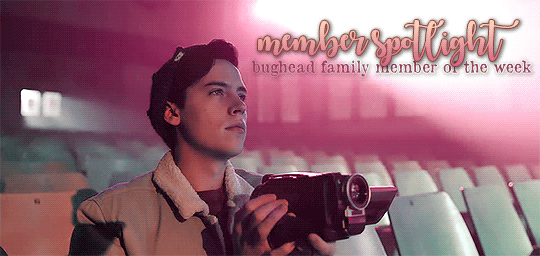
This week the spotlight is on Mari ( @writeraquamarinara )! Click the read more link below to get to know our member!
Spotlight by Mila, @jughead-jones | Graphic by Katie, @betty-cooper
Mari | @writeraquamarinara
Name: Mari
Age: 18
Location: Montreal, QC.
Any other languages aside from English people can contact you in?: Italian.
Favourite Riverdale characters and ships?: Betty, Jughead, Pop, Fred, Mary, Kevin, Joaquin, Bughead, Joavin, and Choni.
Favourite moments from S1 & S2?: The scene that got me hooked to the show was when Reggie questioned Jughead about killing Jason, and he replied with a snarky little “It’s called necrophilia, Reggie. Can you spell it?” Other favorite moments are pretty much any Bughead scene from S1, but especially their first kiss. I had been shipping them together since the Blue and Gold scene in 1x03, but 1x06 really hit me hard. They’re both two broken kids who find solace in each other. As someone whose mother is all too similar to Alice Cooper, hearing Jughead tell Betty that they aren’t their parents made me so emotional. I rewatched that scene on repeat when the clip came out on Youtube the next day. To this day I can’t listen to Emily Afton’s Lost without crying. I also really love the hug from 1x13 after Betty, Veronica, and Archie go to Southside High for Juggie. S2 favorite moments are also only Bughead scenes, but not all Bughead scenes, if you catch my drift.
What are your hopes for S3?: Are a coherent plotline and consistent characterization too much to ask for? Also maybe have the parents on the show (other than Archie’s) actually respect their children and treat them well, but that’s never going to happen. On a more realistic note, I’m hoping to watch some fun interactions between Josie and Kevin now that they’re going to be step-siblings.
Other fandoms you’re into?: I don’t really have an online presence in other fandoms, but I do love to geek out over Percy Jackson, That 70s Show (specifically JackiexHyde), The Office, Parks and Rec, To All the Boys I’ve Loved Before, and nearly all of the Marvel movies.
What are some of your favourite movies/TV?: As I mentioned: That 70s Show, The Office, Parks and Rec, To All the Boys I’ve Loved Before, and Marvel. I’m currently bingeing The Good Place and The Mindy Project. I also went to watch Crazy Rich Asians in theaters and loved it. So basically I’m trash for rom and com. Sue me. (Or don’t. I’m a broke college student who can’t afford that ish.)
Favourite books?: The Book Thief, The Color Purple, Radium Girls: The Dark Story of America’s Shining Women, Pride and Prejudice, and, most of all, The Glass Castle.
Favourite bands/musicians?: Nina Simone, Alicia Keys, ABBA, Of Monsters and Men, Christina Perri, and Imagine Dragons.
If you could live in any fictional world which one would you choose and why?: I thought a lot about this question. The obvious answer would be “one with magic, or mermaids, or superheroes”. But then I thought that I’d rather live in a world like ours, more realistic, but where women are equal to men, diversity is celebrated, people accept each other for who they are. That’s a very idealistic world, I realize, and (if my preteen love of dystopian novels has taught me anything) one that’s most definitely unattainable, but it’s still nice to think about it. If anyone knows of a fictional world like that, sign me up.
Favourite food?: Gosh, that’s a hard one. Probably my grandma’s lasagna.
Favourite season?: Fall, definitely. It’s my birthday season, and I love the colorful leaves and breezy weather and going apple-picking with my family and friends. Unfortunately, Canada’s fall doesn’t last much more than a day, so I missed out on all that this year.
Favourite plant?: Nelumbo nucifera, aka the Lotus Flower.
Favourite scent?: Aftershave? Weird, I know, but it reminds me of my childhood and my father.
Favourite colour?: Periwinkle.
Favourite animal?: Hummingbird.
Are you a night owl, an early bird, or a vampire?: Night owl, definitely.
Place you want to visit?: The Alhambra Palace in Granada, Spain, the Jameh Mosque of Isfahan in Iran, and Ryoanji in Japan.
Do you have pets? If you do, tell us a little about them: I don’t have any pets that live with me currently, but I’ve got a pet back home with my parents. She’s a rescued pup from Mississippi, probably some kind of mix between a Pointer and a Labrador Retriever. Her name’s Sassy and she’s super energetic. If you had asked me this question a week ago I would’ve also said I had a cat named Puma but he was twelve and had cancer, so…yeah.
Tell us a little about yourself?: Um, I never really know what to say to that question. Like, what do you really want to know? I’m Mari (the name comes from my AO3/tumblr username, and not my real name). I was born in New Jersey, grew up in New York and Italy, now go to university in Montreal. I’m super passionate about art history, women’s rights, and politics. I hope to be a dermatologist, but honestly, who knows where life will take me. I’m the oldest of four and the first in my family to go through the American school system, so my parents have always referred to me as their “guinea pig”, and that totally hasn’t given me a weird obsession with being the perfect child, perfect student, perfect daughter. For some very obvious reasons, I relate way too much to Betty Cooper.
Fun or weird fact about you?: I fenced competitively for eight years of my life, traveling all around the US and to Europe for training and national competitions, including the Junior Olympics.
Asks for fanfic authors:
How long have you been writing?: I’ve been writing since I was little, but they were always stories with original characters. I didn’t start writing fic until I was sixteen, nearly seventeen, so it’s been a little over a year.
Which is your favourite of the fics you’ve written?: Geez, that’s a tough one. As much as I love my little one shots, I’d have to say Little Talks. It’s largely based on my own high school experience, and therefore my own way of coming to terms with the end of that chapter of my life.
Favourite fic/chapter/plot-point/character you’ve ever written?: Oof. Another tough one. Um, I’d have to say that I really love my characterization of Alice in Blue Sunshine and Golden Rain. She’s a villainess, but hopefully one you love to hate.
Which was the hardest to write, and why?: Again, Blue Sunshine and Golden Rain. I have a bit of a plot twist planned for the story, but I’m really not sure what kind of reception it’s going to get from readers, so I’ve had the chapter half-finished for months. I just need to get the motivation to finish it, and the courage to say “I don’t care if people hate this, or think it’s weird.” I’ll get there eventually.
How do you come up with the ideas for you fic(s)? (examples: Do you draw inspiration from real life? Listen to music? Get inspired by TV/movies?) Do you have an process to your writing?: I’ve answered this in a tumblr ask before, but I get inspiration from anywhere and everywhere. Mainly from real life, because I like to observe and speculate and ask a bunch of “what if”s and go from there. So, like I mentioned, Little Talks is largely based on my life. But there are definitely some plot points in the story that are a result of me going “well, what if I had done this? Or he had done that?” Another example of a real life-inspired fic is my oneshot I <3 You, which was inspired by that instastory (Cole or Lili’s? I can’t remember) of a cake with bright orange frosting that spelled out I <3 You. I also take inspiration from other creative works, such as books or movies. One of my many upcoming fics is based on How To Train Your Dragon, and another is a crackfic based on the Suite Life. Other times, fic ideas come to me out of nowhere. I was in the lab last summer, waiting for my breast cancer tumor slides to go through antigen retrieval, when I came up with the idea for Blue Sunshine and Golden Rain. My brain works in very strange ways.
Idea that you always wanted to write?: I’ve always wanted to write a lot of fics (I have a whole list of them), but they’re in the works so I won’t spoil any more than I already have. The main fic that I don’t even have an idea for but just want to write is a heartbreakingly angsty fic. One that makes me cry while I write it. Here’s hoping it comes to me soon, because I feel like that could be a really interesting experience as a writer.
Favourite character to write?: Alice. Which is strange, because I don’t like her in the show, but there are so many different directions you could take her character that she’s always so interesting to me.
Best comment/review you’ve ever received?: Oh, well, all of them? Is that an answer? Because all comments and reviews make me super happy. But if I had to choose one then I’d say any comment from @earthlaughsinflowers, @mothermaple, @dottie-wan-kenobi, or @notanotherotherone. I kind of cheated by not picking one, exactly, but oh well.
Best and worst parts of being a writer?: The best part of being a writer is putting a story that you put a lot of your soul into and getting support and love for it. Because I only put stories out there that I’m happy to write, happy to read, but to see that they make other people happy, too? That’s an amazing feeling. The worst part is the amount of time it takes to do absolutely anything, especially when you’re not in the right headspace to write. When I’ve had the worst week ever, and I have to physically push myself to spend time that should be spent resting to write because an update needs to come out soon, it goes from being a fun hobby to being a stress-inducing chore.
Do you have any advice to offer?: I haven’t been a fic writer for a long time, so I wouldn’t say that I’m going to offer up the wisest advice, but here’s what I’ve garnered so far: Do what makes you happy. That goes for all of life, not just writing, and is often hard to follow, but here’s how I see it: If you want to write a story because it makes you happy, write it. If you want to quit your WIP to start something else because that makes you happy, do it. If you need to take a break from writing altogether because it’ll make you happier, take it. Write what you want to write, at the pace you want to write it, and don’t let anyone tell you otherwise.
.
.
This is the twelfth instalment of Bughead Family’s Member Spotlight series. Each week, a member’s url is selected through a randomizer and they will be featured in a spotlight post. In order to participate, please join the Bughead Discord (more information found here). Thank you.
14 notes
·
View notes
Text
I was tagged by @daveslutstaine thanks!
Rules:
Answer the questions given to you by the tagger
Write 11 questions of your own
Tag 11 other people (sorry I’m not gonna tag anyone because I’m shit at making up questions)
1. If you could change any thing in the world what would it be and why?
- End poverty, because like, you need money to buy basic things that you need for living and if you don’t have money you die.
2. If you where in a band what would you name your first album?
- I don’t know, radium would be a cool name (mostly because I spent three years staring at a poster that said radium is metal)
3. Which one of your favs would you let put you in a choke hold?
- Richard
4. Funniest discourse you’ve seen?
- We were having a debate at class and me and my friend were against two of our other friends and I ended the debate by yelling that trees don’t die when the time was already over.
5. Favorite guitarist?
- Matt Bellamy
6. Do you suffer from chronic pain?
- No
7. Name one thing you can’t live without?
- Probably my phone.
8. What are your talents?
- I can play guitar and cook, also I can drive things (is that even a talent?)
9. Do you have a battle vest/jacket? If so what’s your favorite patch/pin on it?
- No I don’t have a battle vest or jacket but I would like to have one
10. Do you guys have any cds/vinyls/cassettes? If so, of what bands/artists?
- I only have one muse cd and then I have several metallica and alice cooper cassettes that my dad’s brothers owned and now they are mine
11. Favorite piece of band merch?
- Either my powerwolf hoodie or my rammstein shirt that glows in the dark
I was also tagged by @liebe-ist-ein-wildes-tier thanks for you too!
1. Sweet or salty?
- Salty
2. How would you describe your style like?
- I just wear anything that is dark, not too tight, band shirts, and my brother’s old clothes. So like dark, with one red hoodie.
3. Are you creative in any way like drawing, writing or any other way? If so, what is it?
- Again, I can play guitar, does that count as a creative thing?
4. Do you have a favourite animal?
- I have three favourite animals, dogs, sharks, and lizards.
5. What‘s your go to movie/tv show when your sad?
- Go to movie is pride (2014)
6. Do you have a motto wich you live by?
- No
7. Do you like to go to the cinema?
- I do, but because I live in the middle of nowhere I only go like twice a year because the closest cinema never shows anything good.
8. What is your favourite alcoholic drink?
- I’m underage and I have only drank punch that contained so much alcohol that I don’t even know what was in it.
9. What was the best trip/vacation you ever took?
- Ever year when we’ve been to shepherding competition with our dogs (not really a vacation because I have had to work)
10. What concerts have you been to?
- ac/dc, muse, twenty one pilots, and rammstein (it was a festival so there were other bands too)
11. A song that touches your heart?
- Starlight by Muse
3 notes
·
View notes
Photo
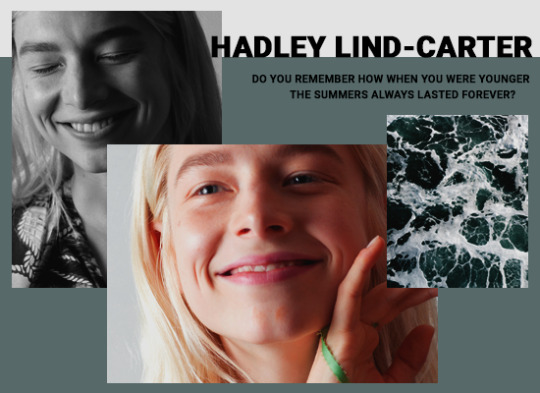
HADLEY MARIE LIND-CARTER
( 20 , trans woman , she/her )
♪♫ currently listening ⧸⧸ do you remember by chance the rapper
chlorine’s tang in long hair, the rosy blush of cheeks too long in the sun. faded flowers pressed between the pages of old books, walls covered in polaroid pictures, an infectious smile that comes easily to soft lips. avocado toast topped with a perfectly poached egg, tangled headphones still echoing with music, long-wilted wildflower crowns.
• burke met you in your freshman year, talking your way into the junior honors biology olympic national forest camping trip with an enthusiasm that impressed him. sure, your interest lay more in taking photos of the various bits of nature than it did in any actual science, but nonetheless, you became friends. sure, you had your own friends in your own grade, and sure, the two of you argued a lot. (you had a lot of ideas about ‘planning’ for a ‘future’ — he was a lot more interested in lazing around under a tree all day) but, in the end, you were good influences for the other, and while you talked him into going to university and doing something with his life, he taught you how to embrace relaxation wholeheartedly, instead of filling every spare moment with a hobby. it hurt to see him go away to school, and it felt a little like he was abandoning you, a little like your heart was breaking, but you knew he’d come back. you knew you had more than a little to say to him when he did.
• carter is the sibling you’d always dreamed of. when you came back from boarding school at the end of seventh grade to find out that your mother had finally gotten together with the handsome man who ran the starlight theater, you’d been thrilled. you’d never known his child well, the few years separating you enough to keep you apart even in such a small town, so it was unsurprising that it took a few years for you to bond with them properly. they took well to the role of protective older sibling, and you fought, and you loved them, and they helped you apply to your first job, and it was truly, truly what you’d always wanted as a lonely only child. you were certain it had something to do with their ex, your math tutor, whose soft smiles still had them wrapped around her finger, and you would always be grateful for that, even if they got on your nerves on more than one occasion.
taken by bee ⧸⧸ hunter schafer
AN INTRODUCTION
who are you ?
( an innocent question. )
who are you ?
( your breath catches in your throat. )
who. are. you ?
( there is self-realization that sometimes you don’t know. )
it starts when you are small — your fascination with everything around you, that is. you look at the world ( up the slopes of mountains, to the skies and to the stars ! ) and you wonder what’s out there. you wonder who is out there. you wonder what your role is meant to be in the universe, despite feeling so infinitesimally small at times, like nothing you could ever do would leave a smudge of a mark on history. still, there is so much to do and so much to see, and you want to do it all. what if you can’t ? you wonder that a lot.
surely, you are nothing but your experiences.
you exist, truthfully, but sometimes you wonder if you are living.
what does it mean to be living ?
you dream of radium girls. perhaps, in another life, you were one of them. isn’t that a dreamy idea ? you think of yourself, long-limbed and lithe, dancing down the street after you’ve finished work. radium is sprinkled in your hair and painted on your nails, and you glow, on the inside and out.. you spin, your dress swirling out in layers around you, and you spin. you see yourself in mirrors and you grin at your reflection. you are a part of the change coming to the world. a new class of working women ! it’s remarkable.
you die young.
radium, however pretty, is poison.
it kills you before you realize something is wrong.
still, people know you existed.
they remember.
that counts for something, you think.
instead, though, or at least in this life, you are only hadley. you are a girl living in tenebrin port, never drifting too far from the place you’ve always called home. you are working on that being enough for you. you find yourself imagining daily yourself living elsewhere. you imagine yourself living so many lives that aren’t you.
( who are you today, hadley ? )
you smile up at your mother, gap-toothed grin wide, six years old, waving your drawing wildly. she took in from your hand and smiles. you are in space, the moon underfoot. the sky is dark and surrounds you. stars and planets twinkle ( courtesy of a lot of glitter glue ) and you are smiling.
that’s something that is continuous in all of your drawings. whether you are a princess or a president, a fisherman or pianist, you are smiling in all of these possibilities. never once does your mother discourage you from any of these things. she just asks you how you’ll become them. you always shrug, saying time will show you the way.
you are an odd little thing. you are never too sure where your ambitions lie, but god, are you ambitious. you will become something, that is certain.
what is — however — unknown is when you will become something and just what you will be. you’ve got time. even though desire burns at your core, you have time.
THE STORY
life starts on a summer day. it’s late august and the high heat is just starting to dissipate. you cry all day and all night. your mother rocks and soothes you until you fall back to sleep. you’re her little star. she loves you more than anything else. more than anyone else. this includes her good-for-nothing husband. he leaves in the winter. a cold day for a cold man. he says he never signed up for this life — for a wife, for a baby — and he leaves without second guessing himself. your mother fights for custody. he signs his life away. your surname becomes lind, like your mother’s once was, and the two of you settle into life. you never miss him. your life is that for two and that is more than enough.
the two of you live above the bakery in the center of town, in main street. it’s a tiny apartment, always too warm and always smelling of yeast and sugar. your mother owns the bakery. she has owned it since her parents died in a car accident that took them too young. she never had question that it would be hers. she was a natural baker. she breathed life into flour, water, and salt, kneading dough with a natural pulse.
you grow up with flour specked on your nose when you go anywhere.
to swim lessons, to piano, to t-ball.
where you’re mother never questioned that the bakery would be hers, you knew that it never could be yours. you were too rough-handed. you never had the patience needed. and that was okay. your mother wasn’t disappointed. instead, she wanted you to find yourself. if that was in all your hobbies, remnants of them in boxes in closets, in all the teams and clubs you joined and left, so be it.
life is fine.
and then things change.
your mother meets a man and she comes home at night with stars in her eyes. over the dinner table, you let her talk and tell her about her dates. it’s dreamy. you listen and you smile, and oh, you are so happy your mother is happy. when he asks you for permission to marry your mother, you don’t say no. you are excited.
they get married and the four of you all move in together.
you aren’t expecting a father, but you get one anyways. he’s nice and he makes sure you’re doing okay in school and in your clubs. you roll your eyes when he asks if you’ve done your homework, but secretly you get butterflies in your stomach every time. you love being cared for. you love the sense of knowing someone cares. and, even better, you also get a sibling out of the deal ! you’ve always dreamed of having a sibling. you know you’d make a good older sister, but you’ll take being a younger sibling if that’s all you’re offered. it takes time, though, more than you’d like for carter and you to really start to form a relationship.
but it happens. it happens and suddenly the two of you are so close. you tell them your secrets and sometimes you feel so small in the great big world, but they seem to know exactly what to say and you feel better. sometimes, it isn’t always great, you share a bathroom in the new house, and sometimes it feels like you’re on top of each other and you argue and fight. it’s all little spats, childish things, and when it all comes to, though, you love each other. blood doesn’t matter. you’re siblings through and through, and you would die for each other. you’d never say it for fear of jinxing it, but you think carter very well may be your best friend. you’re not upset at that.
come high school, which you’ve watched carter go through first, you thrive. classes seem to come second to everything you do, but that’s not particularly important to you. you still draw ideas of your future, this time in graphite and ink instead of crayon. these doodles and sketches can be found in the margins of your math homework and english essays. this time your ideas are a little more … grounded. you sketch a camera. maybe you’ll be a world-renowned photographer. there are doodles of typewriters and butterflies and there are still so many options for you.
still, you don’t know.
that’s why you’re captain of the swim team. you volunteer at the nursing home. you do this and you do that and someone asks you once, “ hadley, do you ever breathe ? ” quick as a whip, you say, “ only every other day. ” it’s a joke, really. no one can ever doubt you are sure about what you do and how you do it.
tenebrin port is an oyster and you are its pearl. you walk around with smiles, easy-going and knowing everyone. you are at home and you are comfortable. you wish this time could last forever. except it can’t. you know that. time moves on and you are tugged along with it, caught in the net of the one thing humans can never escape.
you watch carter grow older, your friends, too. some leave, some stay, but each passing beat of a day shows you that things are different. it hasn’t quite touched you yet, but you know it will. you know it will.
you knew andy had been interested in the lighthouse and the water. when you weren’t actually studying math, she talked about it all the time. you never minded too much, you hated math so it was no loss, but you watch her dive deeper and deeper into it. you’re curious, too, it seems, but you’re not as invested as she is. you wonder how far she’ll take it, or if she’ll just forget.
the latter would have been, oh so nice.
but suddenly, something happens.
something not so unexpected, given everything andy had been doing.
sometimes your mind still says it’s not real.
you wish it weren’t.
you’re at the beach, with andy, with carter and burke, with everyone, it seems. you don’t know all of them. well, you know them by name. you don’t know their thoughts or secrets or their hearts. that doesn’t matter. you’re standing by burke, but your eyes are on andy. you see what she’s doing but you don’t understand. you know better, she should know better. every time you close your eyes, you see her face in her swan dive.
you don’t speak of it.
your mother tries to get you to open up, to not dwell in your grief, but externally, it’s like it hasn’t affected you at all. of course, you wear black and you cry at the funeral, but it doesn’t touch you. you don’t cry at home where your mother and stepfather can hear you. you don’t get angry and you don’t lash out. instead, you lie awake all night, eyes fastened on the glow-in-the-dark stars on your ceiling. you wonder why.
knowing you might never get an answer tastes sour on your tongue.
days pass and you still know the andy existed. still, time presses on, and it’s like the world is forgetting, and you just can’t. you remember her face on posters for homecoming queen, though. you remember the way she smiled and the whole world lit up. it all seems a little darker now, the world, tenebrin. it seems silly, that one person from a small town could unravel the threads of it so easily. but andy was andy. if anyone could, surely it must be her.
is this moving on ? or are you still grieving ?
it’s certainly the latter.
your mother sends you away. she says you need a distraction because, for all you try to play fine, she knows you too well. you go to a cousin’s house you haven’t seen in years. you sleep in a room that smells like fabric softener, and you wander a town that could be tenebrin but isn’t. you spend your days at the community pool, the chlorine tinging your hair green. you go see movies and you eat lunch at the same cafe every day. it’s not where you want to be but it pulls you away from your grief. without tenebrin being your backdrop, you’re able to move on, just a little. you begin to laugh again. you smile with rosy cheeks.
hadley, you’re back, even though you never realized you disappeared.
but where you were once screaming technicolor, you’ve been misted with gray.
a reminder that grief fades, but it leaves a stain.
soon, the leaves are changing colors, and it’s as rainy as it ever is.
you come back to tenebrin and fall back into your normal routine.
it feels like nothing has changed, but you almost wish that it did.
AN EPILOGUE
you cry when you leave tenebrin port. your mother rubs your shoulder consolingly, saying you’re not that far, but it doesn’t help. you’ll miss your home. this should be exciting, though, and below all of your anguish, you know it is. you leave with your sticker-covered suitcase and a camera bag slung over your shoulder.
you pin photos to your dorm room wall, a chaotic collage. alongside it are dried flowers and ribbons you can’t bear to throw out. it’s bright and it’s beautiful. your homesickness doesn’t last long. you settle into your new life with ease. you go out at night, you find friends like you always do. you throw yourself into collegiate organizations. a sorority, the newspaper, the literary magazine. you’re always busy. you love it.
you are studying photography, perhaps that should have been said earlier. you’ve got an eye for it, and everyone says it. you capture things no one else would bother to look at. you see the light in the darkness, the dark in the light. it doesn’t seem quite like the sort of thing that could change a life, but you always find yourself startled when someone looks at your photos and become wordless.
every summer after that first year, you go home to tenebrin.
you catch up with your sibling, you catch up with old friends.
time passes in a blur, somehow faster than you can imagine. freshman year, sophomore, than junior. where has the time gone ? you have done shows and galleries in seattle, little spotlights for local students. you go to nyu for a semester. the big city isn’t your thing, and you are relieved when you return to washington. you pick up a journalism minor. it seems relevant. oh, and a french one, too. it’s too pretty to pass up. life seems to be passing and flying by. you can’t always keep up.
finally, finally, it’s your last year before your senior year. so many of your friends have graduated from university already, starting their lives, and you can’t quite explain how you’re feeling. you’re eager for something, but you are turning the page to a new chapter. that's … frightening. maybe not scary, that’s not quite it, but unnerving. you are unnerved. nothing before has ever seemed so tenuous, so ungraspable. you think that you will worry about everything … later. this last summer must be good for you. you are willing it to be. if the universe has ever been listening to you, you hope it’s now.
0 notes
Text
so now that the semester is finally over, I feel like I should share some of the things that my physics professor said during lecture, because some of them are just golden •*points at a rainbow* According to the laws of refraction, this should be violet. It is, right? I can't tell, I'm colorblind •If the math department knew I was writing this, they'd come in here and take me away •*draws a sun with a smiley face* You'd be smiling too if you were a giant thermonuclear reaction •Einstein figured all of this out by just sitting around and thinking about it, which he could do because he had a job that let him sit around and think all the time. He was a government official. •So Rontgen. I don't like this guy. Every good scientist knows not to experiment on themself, but apparently he read Dr. Jekyl and Mr. Hyde and thought that this was a great idea. The kicker is that he didn't X-ray his own hand. That's his wife's hand. *throws marker at the projector screen* Stinker. To add insult to injury, she's even wearing her wedding band. •*shows a picture of Homer Simpson's brain being x-rayed* That's a picture of me and my brain right there •I'm just going to give you the question and the answer all in one go because I'm an impatient old man •*talking about Schröedinger's cat* If you open the box and see a dead cat, then it's dead, baby. •Gamma rays won't turn you into Spider-Man. What they will do is give you a good cookin' •The tilde means close enough for government work, especially under current government standards •When radium was first discovered, people though, "Wow, cool, it glows. How could that possibly be bad for you?"
#professors#teachers#shit professors say#he's honestly one of the funniest professors I've ever had#I don't even like physics but he made it much more interesting#mine
16 notes
·
View notes
Photo

Celebrate Diversity with #IReadIndie!
We’re proud to be part of the independent publishing community, promoting titles that breed independent minds, break the mold, and dare to be different. In support of our fellow independents, we’d like to draw attention to big books from smaller publishers across the country. First up, we’re highlighting our best books that celebrate diversity.
What are your favorite independent books? Join in on the conversation by using #IReadIndie.
Abrams Books
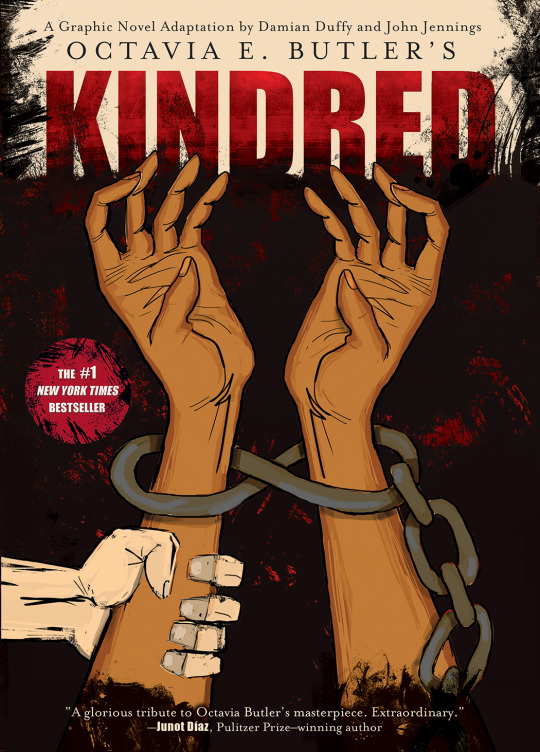
Kindred: A Graphic Novel Adaptation by Octavia Butler; Adapted by Damian Duffy and illustrated by John Jennings
More than 35 years after its release, Kindred continues to draw in new readers with its deep exploration of the violence and loss of humanity caused by slavery in the United States, and its complex and lasting impact on the present day. Adapted by celebrated academics and comics artists Damian Duffy and John Jennings, this graphic novel powerfully renders Butler’s mysterious and moving story, which spans racial and gender divides in the antebellum South through the 20th century.
IndieBound: http://bit.ly/2kT3Iv4
Amazon: http://amzn.to/2kTf0iT
B&N: http://bit.ly/2kT8dpm
ABRAMS: http://bit.ly/2kTbrcr
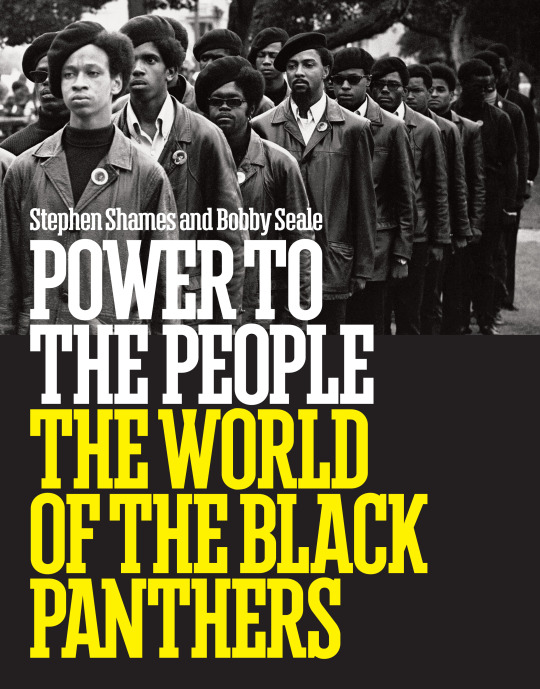
Power to the People: The World of the Black Panthers by Bobby Seale; photographer Stephen Shames
Admired, reviled, emulated, misunderstood, the Black Panther Party was one of the most creative and influential responses to racism and inequality in American history. They advocated armed self-defense to counter police brutality, and initiated a program of patrolling the police with shotguns—and law books. Published on the 50th anniversary of the party’s founding, Power to the People is the in-depth chronicle of the only radical political party in America to make a difference in the struggle for civil rights.
IndieBound: http://bit.ly/2kTclFL
Amazon: http://amzn.to/2kT8E3b
B&N: http://bit.ly/2kSY5gi
ABRAMS: http://bit.ly/2kTfo11
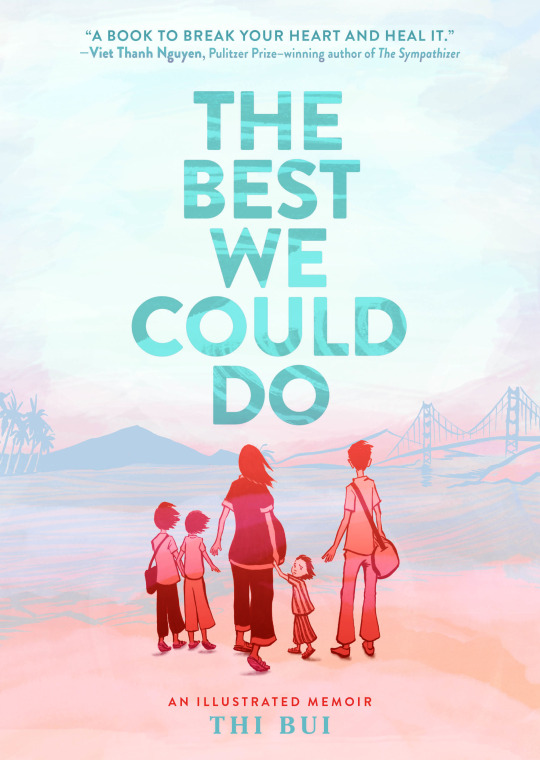
The Best I Could Do: An Illustrated Memoir by Thi Bui
This beautifully illustrated and emotional story is an evocative memoir about the search for a better future and a longing for the past. Exploring the anguish of immigration and the lasting effects that displacement has on a child and her family, debut author Thi Bui documents the story of her family’s daring escape after the fall of South Vietnam in the 1970s, and the difficulties they faced building new lives for themselves.
IndieBound: http://bit.ly/2kTfeXt
Amazon: http://amzn.to/2kT71SW
B&N: http://bit.ly/2kTa8Kw
ABRAMS: http://bit.ly/2kT0M1y
Workman Publishing

This is Me: A Story of Who We Are and Where We Came From by Jamie Lee Curtis and Laura Cornell
From the #1 New York Times bestselling creative team comes a timely, interactive picture book about immigration and identity. It asks children to consider: What would you pack if you had to travel to a new country with just a small suitcase? What are the things you love best? What says “This is me!”
Indiebound: https://goo.gl/WOczqq
Amazon: http://amzn.to/2kLnSug
Barnes & Noble: https://goo.gl/uGwzHW
Workman: https://goo.gl/ZrBBhr

In the Company of Women: Inspiration and Advice from over 100 Makers, Artists, and Entrepreneurs by Grace Bonney
Across the globe, women are embracing the entrepreneurial spirit and starting creative businesses. In the Company of Women profiles over 100 of these influential and creative women from all ages, races, backgrounds, and industries, and details the keys to their success.
Indiebound: https://goo.gl/Wb3yjd
Amazon: http://amzn.to/2jLPwFr
Barnes & Noble: https://goo.gl/cOK9mi
Workman: https://goo.gl/ufnLJR

Here We Are: Feminism for the Real World edited by Kelly Jensen
Forty-four writers, dancers, actors, and artists contribute essays, lists, poems, comics, and illustrations about everything from body positivity to romance to gender identity to intersectionality to the greatest girl friendships in fiction. Together, they share diverse perspectives on and insights into what feminism means and what it looks like.
Indiebound: https://goo.gl/w8guFS
Amazon: http://amzn.to/2jOxfFg
Barnes & Noble: https://goo.gl/aZkg5w
Workman: https://goo.gl/yd8XsD
Sourcebooks, Inc.
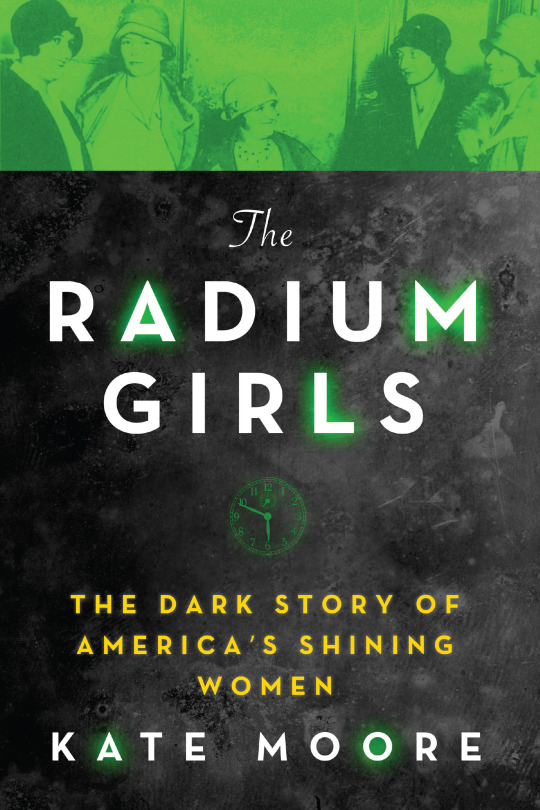
The Radium Girls: The Dark Story of America’s Shining Women by Kate Moore
As World War I raged across the globe, hundreds of young women toiled away at the radium-dial factories, where they painted clock faces with a mysterious new substance called radium. With such a coveted job, these “shining girls” were considered the luckiest alive—until they began to fall mysteriously ill. The Radium Girls is the first book that fully explores the strength of these extraordinary women in the face of almost impossible circumstances and the astonishing legacy they left behind.
Indiebound: https://goo.gl/JAQ5A0
Amazon: https://goo.gl/IdsGop
Barnes & Noble: https://goo.gl/CkCN9d

Isabella: Girl in Charge by Jennifer Fosberry (author) and Mike Litwin (illustrator)
Isabella: Girl in Charge explores some of the amazing women who made political history. This heartwarming tale empowers young girls to realize their true capabilities while inspiring them to let their own personalities shine.
Indiebound: https://goo.gl/kBrJr0
Amazon: https://goo.gl/YvvloJ
Barnes & Noble: https://goo.gl/cYzH5k
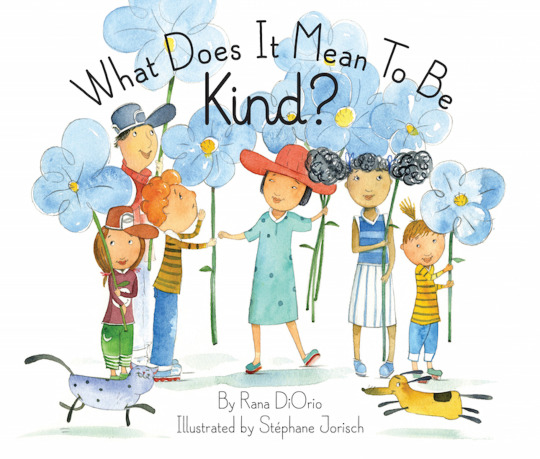
What Does it Mean to Be Kind? By Rana DiOrio (author) and Stéphane Jorisch (illustrator)
Part of the award-winning What Does It Mean to Be…? series, What Does It Mean to Be Kind? is a straightforward, accessible introduction to the idea of kindness, with suggestions that foster empathy and enlighten the world. What Does It Mean to Be Kind? shows young children how easy it is to be kind, through small acts and in simple ways.
Indiebound: https://goo.gl/XLGWrm
Amazon: https://goo.gl/Zcr4ol
Barnes & Noble: https://goo.gl/2vDb4r
Grove Atlantic

The Kindness of Enemies by Leila Aboulela
With citizens from seven predominantly Muslim countries recently banned from entering the United States, it is more important than ever to turn to and support those voices whose work unpacks history in order to provide clarity to the present. In her latest novel, Sudanese-born Leila Aboulela writes with inimitable elegance a multi-generational historical fiction saga about Imam Shamil, the 19th century Muslim leader who led the anti-Russian resistance in the Caucasian War; his family; and the reach of his legacy today. The Kindness of Enemies is both an engrossing story of a provocative period in history and an important examination of what it is to be a Muslim in a post-9/11 world.
Indiebound: https://goo.gl/ZuSDhw
Amazon: https://goo.gl/gp6eBX
Barnes & Noble: https://goo.gl/F5waU7
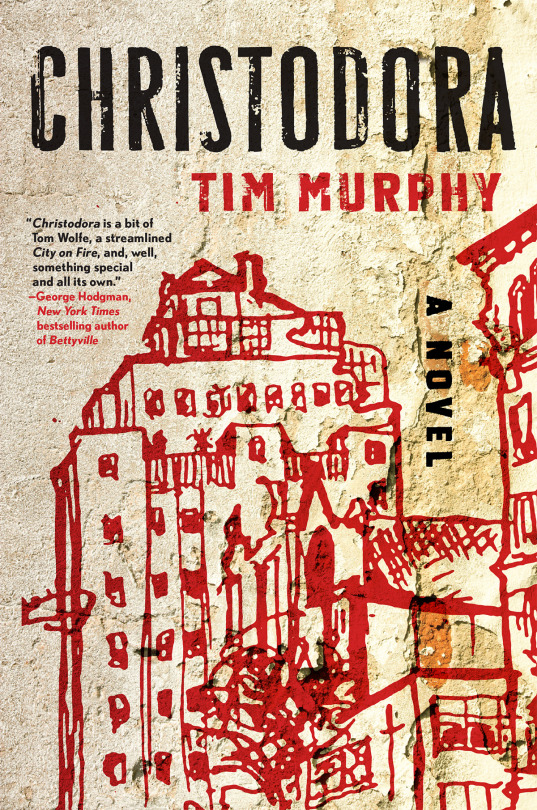
Christodora by Tim Murphy
In an age where queer people face hostility from a reactionary political establishment, the activism of the AIDS crisis offers urgent lessons as to how we can make positive change in the face of oppression and misinformation. A portrait of the endurance of love, the constellation of relationships that binds us, and the changing world of New York City, Christodora is a deeply moving portrait of a lost bohemian Manhattan and a powerful exploration of the fate of activists and artists in our contemporary society.
Indiebound: https://goo.gl/0gWfIv
Amazon: https://goo.gl/DIInxN
Barnes & Noble: https://goo.gl/LRKkob
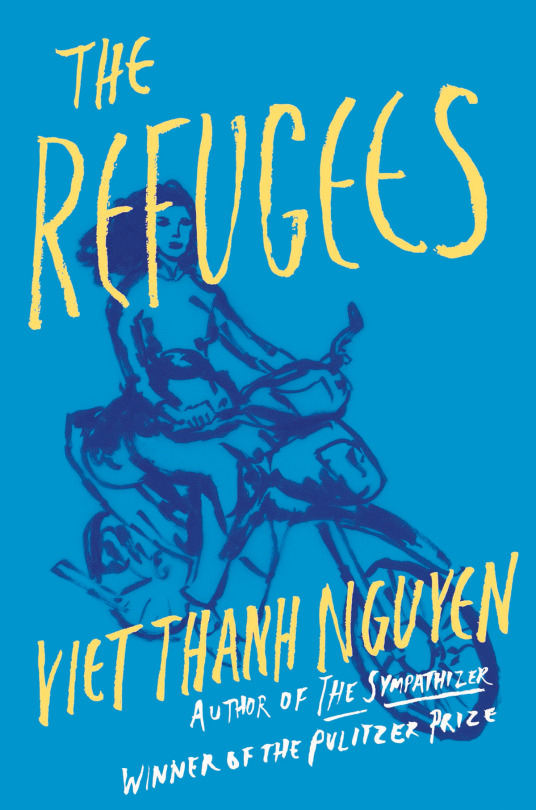
The Refugees by Viet Thanh Nguyen
The refugee experience is the world experience, and it is the American experience too—not least because of wars fought abroad that cause an influx of refugees at home. In his new collection, The Refugees, Viet Thanh Nguyen looks at the Vietnamese refugee experience in America, as well as the lives of some Americans in Vietnam. From the battles to build a good life in the wake of actual wars left behind, to new and old experiences of love and tenderness, and questions of where home is when hostility is faced both in the country of birth and the adopted country, The Refugees is a powerful and moving testament to the experiences of people living lives between two worlds.
Indiebound: https://goo.gl/4aDzy5
Amazon: https://goo.gl/XCWGVy
Barnes & Noble: https://goo.gl/GypWIV
Feminist Press
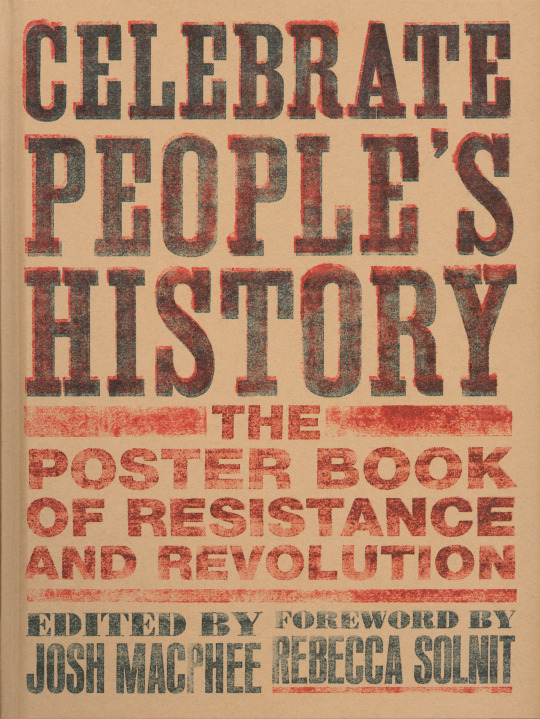
Celebrate People’s History by Josh MacPhee
Celebrate People's History! features posters by over eighty artists that pay tribute to revolution, racial justice, women's rights, queer liberation, labor struggles, and creative activism and organizing. These essential movements—acts of resistance and great events in an often hidden history of civil rights struggles—remind us of the resilience of humankind even at the darkest of moments.
Indiebound: goo.gl/GVu8Eh
Amazon: goo.gl/jcq2pg
Barnes & Noble: goo.gl/QOTT03
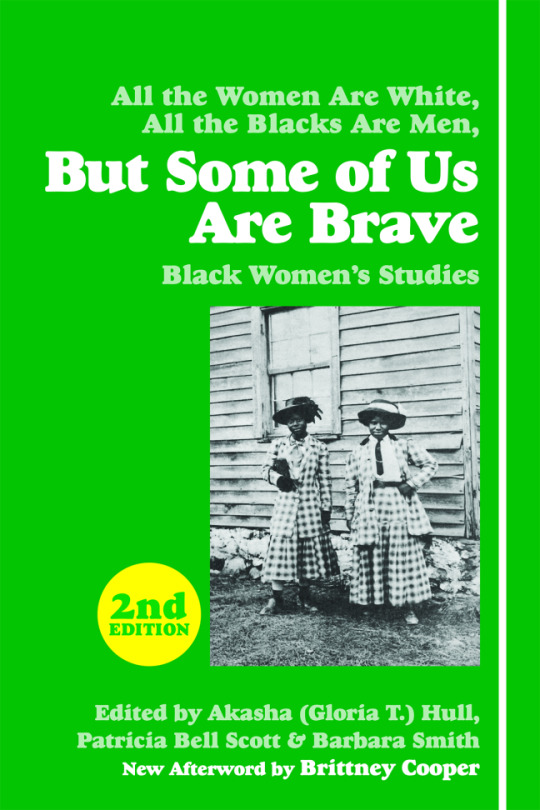
But Some of Us Are Brave (2nd Edition) By Gloria T. Hull, Patricia Bell Scott, and Barbara Smith
A precursor to Women’s March organizer Linda Sarsour’s statement “if you’re not following a woman of color, you’re in the wrong movement,” All the Women Are White, All the Blacks Are Men, But Some of Us Are Brave: Black Women's Studies is the first-ever comprehensive collection of black feminist scholarship. Featuring essays by Alice Walker, the Combahee River Collective, and Barbara Smith, and original resources, this book is vital to today's conversation on race and gender in America.
Indiebound: goo.gl/cjNCwe
Amazon: goo.gl/nJ9frM
Barnes & Noble: goo.gl/dF8KWZ

The Crunk Feminist Collection by Brittney C. Cooper, Susana M. Morris, and Robin M. Boylorn
For the Crunk Feminist Collective, their academic day jobs were lacking in conversations they actually wanted to have—relevant, real conversations about how race and gender politics intersect with pop culture and current events. To address this void, they started a blog. Now with an annual readership of nearly one million, their posts foster dialogue about activist methods, intersectionality, and sisterhood. Never afraid to speak out, disrupt narratives, and prioritize self-care, the Crunk editors are the models we need for activism in 2017.
Indiebound: goo.gl/yFw61u
Amazon: goo.gl/XK6Dfy
Barnes & Noble: goo.gl/pPntQd
Milkweed Editions

Braiding Sweetgrass: Indigenous Wisdom, Scientific Knowledge and the Teachings of Plants by Robin Wall Kimmerer
“A hymn of love to the world.” —Elizabeth Gilbert
As a botanist, the author has been trained to examine nature with the tools of science; as a member of the Citizen Potawatomi Nation, she embraces the notion that plants and animals are our teachers. Here she brings these two lenses together, showing how other living beings offer us gifts and lessons, even if we’ve forgotten how to hear their voices.
Indiebound: https://goo.gl/WRoRgM
Amazon: https://goo.gl/lhl6eP
Barnes & Noble: https://goo.gl/TAQDX9
Milkweed: https://goo.gl/sqqg1E
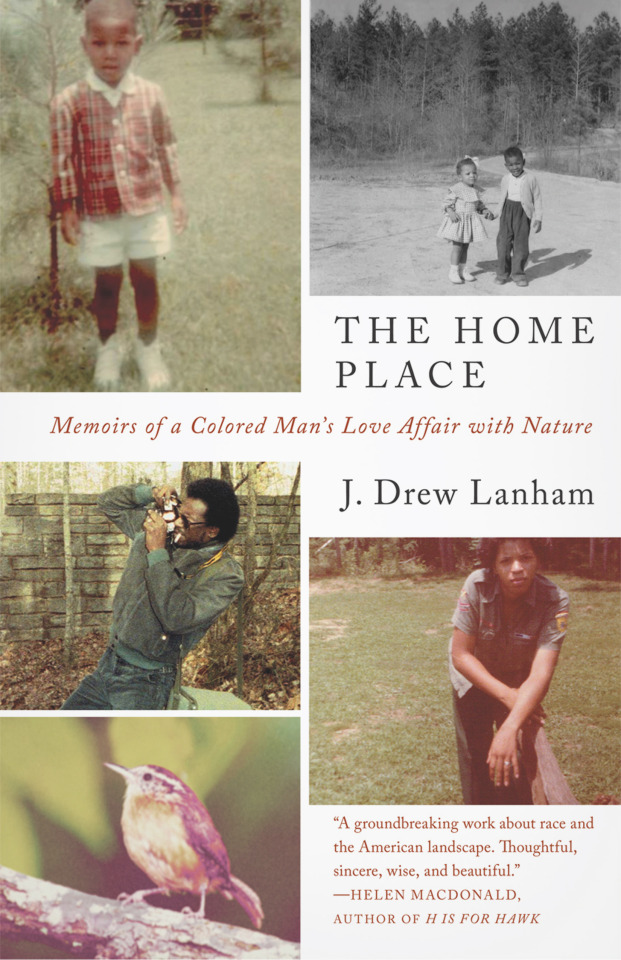
The Home Place: Memoirs of a Colored Man’s Love Affair with Nature by J. Drew Lanham
Growing up on his family’s land in South Carolina, J. Drew Lanham fell in love with the subtle beauties of the natural world around him—and grew up to be one of the lone black men in a predominantly white field. This memoir is a riveting exploration of the contradictions of black identity in the rural South, asking what it means to be “the rare bird, the oddity.”
Indiebound: https://goo.gl/uOFCI4
Amazon: https://goo.gl/yV4udn
Barnes & Noble: https://goo.gl/UpxnMy
Milkweed: https: //goo.gl/oC3wRN

Tula: Poems by Chris Santiago
Tula: a ruined Toltec capital; a Russian city known for its accordions; Tagalog for “poem.” Inspired by the experiences of the second-generation immigrant who does not fully acquire the language of his parents, the winner of the 2016 Lindquist & Vennum Prize for Poetry paints the portrait of a mythic homeland that is part ghostly underworld, part unknowable paradise.
Indiebound: https://goo.gl/wQzYuY
Amazon: https://goo.gl/grTywe
Barnes & Noble: https://goo.gl/qsUiel
Milkweed: https://goo.gl/XfeFHr
Chronicle Books

Golden Domes and Silver Lanterns: A Muslim Book of Colors by Hena Khan, illustrated by Mehrdokht Amini
Magnificently capturing the colorful world of Islam for the youngest readers, this breathtaking and informative picture book celebrates Islam’s beauty and traditions. From a red prayer rug to a blue hijab, everyday colors are given special meaning as young readers learn about clothing, food, and other important elements of Islamic culture, with a young Muslim girl as a guide.
Indiebound: https://goo.gl/hz8CiN
Chronicle Books: http://ss1.us/a/XVNvTje3
Amazon: http://amzn.to/2kOJp4Z
Barnes & Noble: https://goo.gl/11nzG2

At the Same Moment, Around the World by Clotilde Perrin
Clotilde Perrin takes readers eastward from the Greenwich meridian, from day to night, with each page portraying one of (the original) 24 time zones. Discover Benedict drinking hot chocolate in Paris, France; Mitko chasing the school bus in Sofia, Bulgaria; and Khanh having a little nap in Hanoi, Vietnam. Strong back matter empowers readers to learn about the history of timekeeping and time zones, and to explore where each of the characters lives on the world map.
Indiebound: https://goo.gl/j07B4d
Chronicle Books: http://ss1.us/a/rdbTsers
Amazon: http://amzn.to/2jRTgTO
Barnes & Noble: https://goo.gl/329S6H

Loving vs. Virginia: A Documentary Novel of the Landmark Civil Rights Case by Patricia Hruby Powell, Illustrated by Shadra Strickland
From acclaimed author Patricia Hruby Powell comes the story of a landmark civil rights case, told in spare and gorgeous verse. In 1955, in Caroline County, Virginia, amidst segregation and prejudice, injustice and cruelty, two teenagers fell in love. Their life together broke the law, but their determination would change it. Richard and Mildred Loving were at the heart of a Supreme Court case that legalized marriage between races, and a story of the devoted couple who faced discrimination, fought it, and won.
Indiebound: https://goo.gl/96Gupl
Chronicle Books: http://ss1.us/a/ICBp0PDQ
Amazon: http://amzn.to/2kOIS3a
Barnes & Noble: https://goo.gl/98Zbp8
Stay tuned on our blog for another collection from your favorite independent publishers! And don’t forget to use #IReadIndie when you talk about your independent books!
#abramsbooks#abrams books#celebrate diversity#i read diverse books#we need diverse books#weneeddiversebooks#book lists#ireadindie#independent publishers#indie publishers
9 notes
·
View notes
Photo

We’re proud to be part of the independent publishing community, promoting titles that break the mold and push boundaries. In support of our fellow independents, we’d like to draw attention to big books from smaller publishers across the country. First up, we’re highlighting our best books—fiction, essays, poetry, children’s stories, science books, memoir, and more—that celebrate diversity and inclusion, give voice to marginalized communities, and encourage free thinking—books that dare to be different.
What are your favorite current reads from independent houses? Join in on the conversation by using #IReadIndie.
Celebrate Diversity
Grove Atlantic
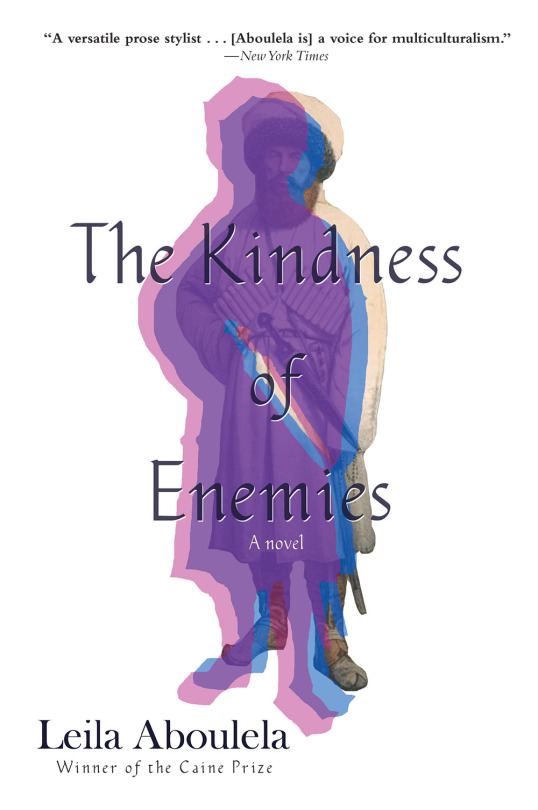
The Kindness of Enemies by Leila Aboulela
With citizens from seven predominantly Muslim countries recently banned from entering the United States, it is more important than ever to turn to and support those voices whose work unpacks history in order to provide clarity to the present. In her latest novel, Sudanese-born Leila Aboulela writes with inimitable elegance a multi-generational historical fiction saga about Imam Shamil, the 19th century Muslim leader who led the anti-Russian resistance in the Caucasian War; his family; and the reach of his legacy today. The Kindness of Enemies is both an engrossing story of a provocative period in history and an important examination of what it is to be a Muslim in a post-9/11 world.
Buy Links:
Indiebound: https://goo.gl/ZuSDhw
Amazon: https://goo.gl/gp6eBX
Barnes & Noble: https://goo.gl/F5waU7
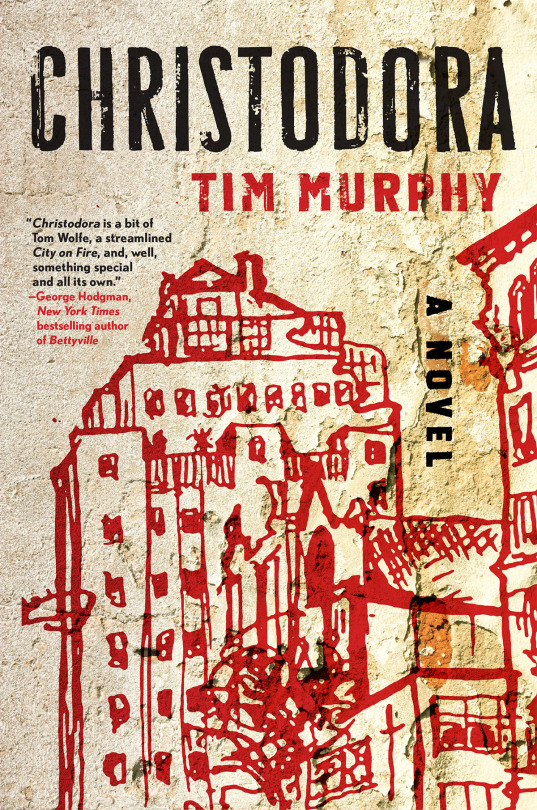
Christodora by Tim Murphy
In an age where queer people face hostility from a reactionary political establishment, the activism of the AIDS crisis offers urgent lessons as to how we can make positive change in the face of oppression and misinformation. A portrait of the endurance of love, the constellation of relationships that binds us, and the changing world of New York City, Christodora is a deeply moving portrait of a lost bohemian Manhattan and a powerful exploration of the fate of activists and artists in our contemporary society.
Buy Links:
Indiebound: https://goo.gl/0gWfIv
Amazon: https://goo.gl/DIInxN
Barnes & Noble: https://goo.gl/LRKkob

The Refugees by Viet Thanh Nguyen
The refugee experience is the world experience, and it is the American experience too—not least because of wars fought abroad that cause an influx of refugees at home. In his new collection, The Refugees, Viet Thanh Nguyen looks at the Vietnamese refugee experience in America, as well as the lives of some Americans in Vietnam. From the battles to build a good life in the wake of actual wars left behind, to new and old experiences of love and tenderness, and questions of where home is when hostility is faced both in the country of birth and the adopted country, The Refugees is a powerful and moving testament to the experiences of people living lives between two worlds.
Buy Links:
Indiebound: https://goo.gl/4aDzy5
Amazon: https://goo.gl/XCWGVy
Barnes & Noble: https://goo.gl/GypWIV
Workman Publishing

This is Me: A Story of Who We Are and Where We Came From by Jamie Lee Curtis and Laura Cornell
From the #1 New York Times bestselling creative team comes a timely, interactive picture book about immigration and identity. It asks children to consider: What would you pack if you had to travel to a new country with just a small suitcase? What are the things you love best? What says “This is me!”
Buy links:
Indiebound: https://goo.gl/WOczqq
Amazon: http://amzn.to/2kLnSug
Barnes & Noble: https://goo.gl/uGwzHW
Workman: https://goo.gl/ZrBBhr

In the Company of Women: Inspiration and Advice from over 100 Makers, Artists, and Entrepreneurs by Grace Bonney
Across the globe, women are embracing the entrepreneurial spirit and starting creative businesses. In the Company of Women profiles over 100 of these influential and creative women from all ages, races, backgrounds, and industries, and details the keys to their success.
Buy links:
Indiebound: https://goo.gl/Wb3yjd
Amazon: http://amzn.to/2jLPwFr
Barnes & Noble: https://goo.gl/cOK9mi
Workman: https://goo.gl/ufnLJR
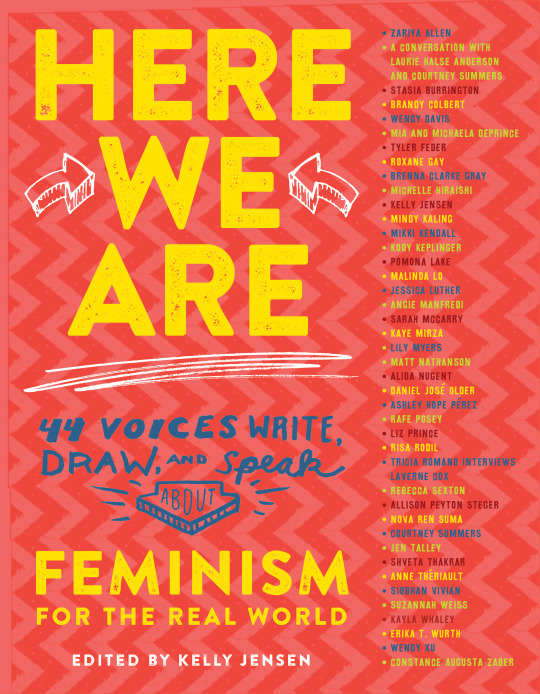
Here We Are: Feminism for the Real World edited by Kelly Jensen
Forty-four writers, dancers, actors, and artists contribute essays, lists, poems, comics, and illustrations about everything from body positivity to romance to gender identity to intersectionality to the greatest girl friendships in fiction. Together, they share diverse perspectives on and insights into what feminism means and what it looks like.
Buy links:
Indiebound: https://goo.gl/w8guFS
Amazon: http://amzn.to/2jOxfFg
Barnes & Noble: https://goo.gl/aZkg5w
Workman: https://goo.gl/yd8XsD
Sourcebooks, Inc.

The Radium Girls: The Dark Story of America’s Shining Women by Kate Moore
As World War I raged across the globe, hundreds of young women toiled away at the radium-dial factories, where they painted clock faces with a mysterious new substance called radium. With such a coveted job, these “shining girls” were considered the luckiest alive—until they began to fall mysteriously ill. The Radium Girls is the first book that fully explores the strength of these extraordinary women in the face of almost impossible circumstances and the astonishing legacy they left behind.
Buy Links:
Indiebound: https://goo.gl/JAQ5A0
Amazon: https://goo.gl/IdsGop
Barnes & Noble: https://goo.gl/CkCN9d

Isabella: Girl in Charge by Jennifer Fosberry (author) and Mike Litwin (illustrator)
Isabella: Girl in Charge explores some of the amazing women who made political history. This heartwarming tale empowers young girls to realize their true capabilities while inspiring them to let their own personalities shine.
Buy Links:
Indiebound: https://goo.gl/kBrJr0
Amazon: https://goo.gl/YvvloJ
Barnes & Noble: https://goo.gl/cYzH5k

What Does it Mean to Be Kind? By Rana DiOrio (author) and Stéphane Jorisch (illustrator)
Part of the award-winning What Does It Mean to Be…? series, What Does It Mean to Be Kind? is a straightforward, accessible introduction to the idea of kindness, with suggestions that foster empathy and enlighten the world. What Does It Mean to Be Kind? shows young children how easy it is to be kind, through small acts and in simple ways.
Buy Links:
Indiebound: https://goo.gl/XLGWrm
Amazon: https://goo.gl/Zcr4ol
Barnes & Noble: https://goo.gl/2vDb4r
Feminist Press

Celebrate People’s History by Josh MacPhee
Celebrate People's History! features posters by over eighty artists that pay tribute to revolution, racial justice, women's rights, queer liberation, labor struggles, and creative activism and organizing. These essential movements—acts of resistance and great events in an often hidden history of civil rights struggles—remind us of the resilience of humankind even at the darkest of moments.
Buy Links:
Indiebound: goo.gl/GVu8Eh
Amazon: goo.gl/jcq2pg
Barnes & Noble: goo.gl/QOTT03
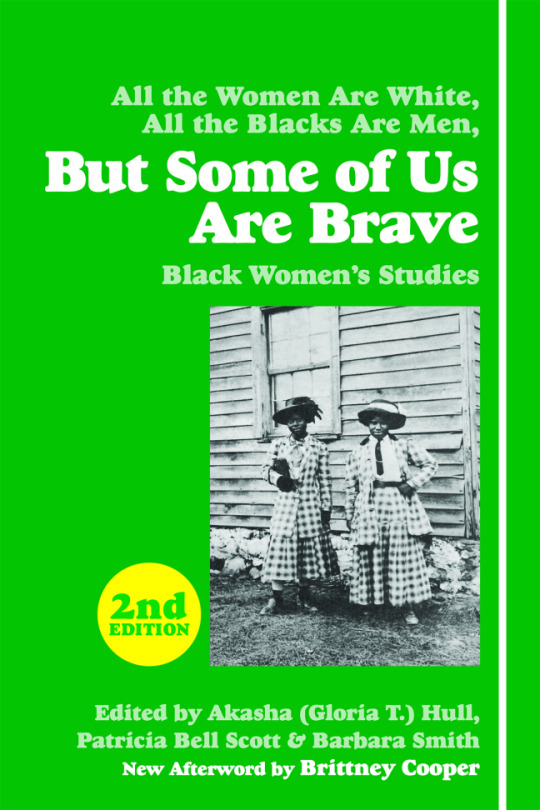
But Some of Us Are Brave (2nd Edition) By Gloria T. Hull, Patricia Bell Scott, and Barbara Smith
A precursor to Women’s March organizer Linda Sarsour’s statement “if you’re not following a woman of color, you’re in the wrong movement,” All the Women Are White, All the Blacks Are Men, But Some of Us Are Brave: Black Women's Studies is the first-ever comprehensive collection of black feminist scholarship. Featuring essays by Alice Walker, the Combahee River Collective, and Barbara Smith, and original resources, this book is vital to today's conversation on race and gender in America.
Buy Links:
Indiebound: goo.gl/cjNCwe
Amazon: goo.gl/nJ9frM
Barnes & Noble: goo.gl/dF8KWZ
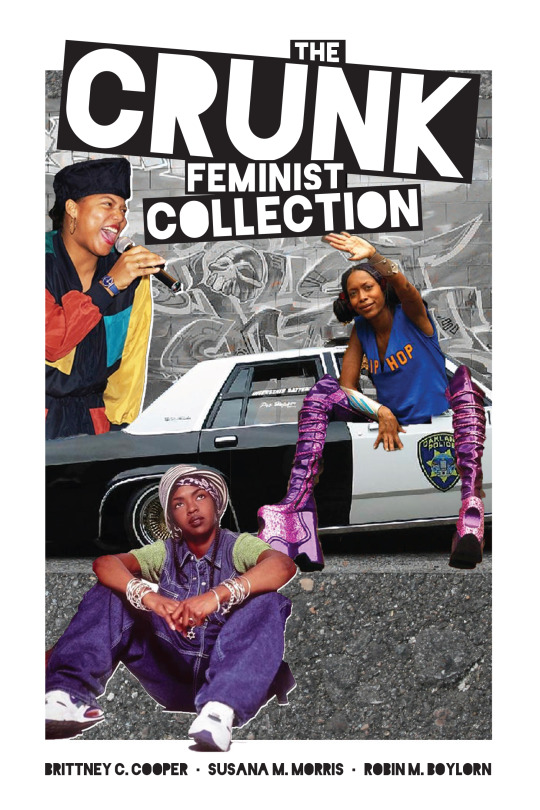
The Crunk Feminist Collection by Brittney C. Cooper, Susana M. Morris, and Robin M. Boylorn
For the Crunk Feminist Collective, their academic day jobs were lacking in conversations they actually wanted to have—relevant, real conversations about how race and gender politics intersect with pop culture and current events. To address this void, they started a blog. Now with an annual readership of nearly one million, their posts foster dialogue about activist methods, intersectionality, and sisterhood. Never afraid to speak out, disrupt narratives, and prioritize self-care, the Crunk editors are the models we need for activism in 2017.
Buy Links:
Indiebound: goo.gl/yFw61u
Amazon: goo.gl/XK6Dfy
Barnes & Noble: goo.gl/pPntQd
Milkweed Editions
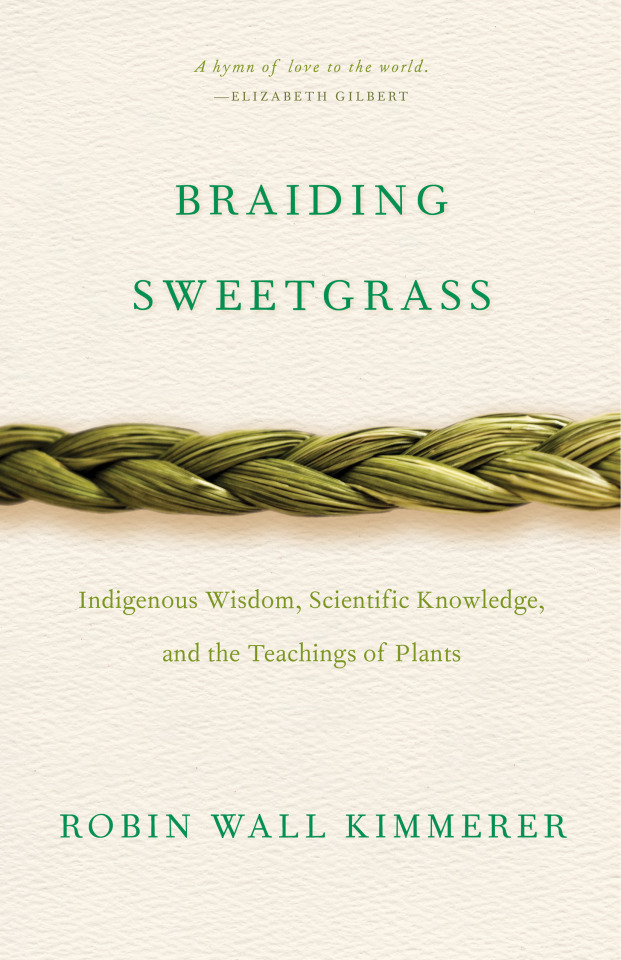
Braiding Sweetgrass: Indigenous Wisdom, Scientific Knowledge and the Teachings of Plants by Robin Wall Kimmerer
“A hymn of love to the world.” —Elizabeth Gilbert
As a botanist, the author has been trained to examine nature with the tools of science; as a member of the Citizen Potawatomi Nation, she embraces the notion that plants and animals are our teachers. Here she brings these two lenses together, showing how other living beings offer us gifts and lessons, even if we’ve forgotten how to hear their voices.
Buy Links:
Indiebound: https://goo.gl/WRoRgM
Amazon: https://goo.gl/lhl6eP
Barnes & Noble: https://goo.gl/TAQDX9
Milkweed: https://goo.gl/sqqg1E
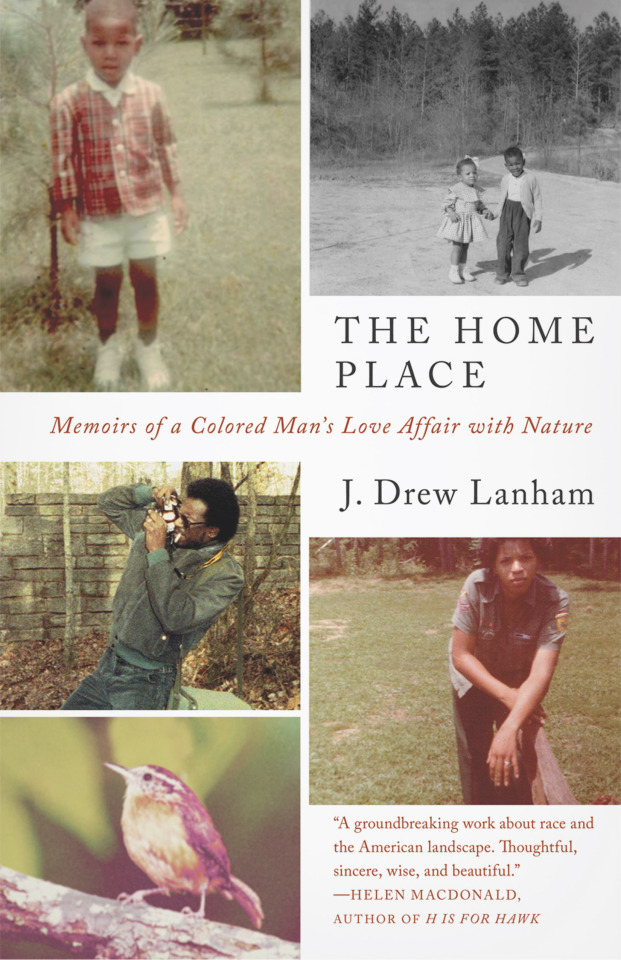
The Home Place: Memoirs of a Colored Man’s Love Affair with Nature by J. Drew Lanham
Growing up on his family’s land in South Carolina, J. Drew Lanham fell in love with the subtle beauties of the natural world around him—and grew up to be one of the lone black men in a predominantly white field. This memoir is a riveting exploration of the contradictions of black identity in the rural South, asking what it means to be “the rare bird, the oddity.”
Buy Links:
Indiebound: https://goo.gl/uOFCI4
Amazon: https://goo.gl/yV4udn
Barnes & Noble: https://goo.gl/UpxnMy
Milkweed: https://goo.gl/rEtPnV

Tula: Poems by Chris Santiago
Tula: a ruined Toltec capital; a Russian city known for its accordions; Tagalog for “poem.” Inspired by the experiences of the second-generation immigrant who does not fully acquire the language of his parents, the winner of the 2016 Lindquist & Vennum Prize for Poetry paints the portrait of a mythic homeland that is part ghostly underworld, part unknowable paradise.
Buy Links:
Indiebound: https://goo.gl/wQzYuY
Amazon: https://goo.gl/grTywe
Barnes & Noble: https://goo.gl/qsUiel
Milkweed: https://goo.gl/XfeFHr
Abrams Books
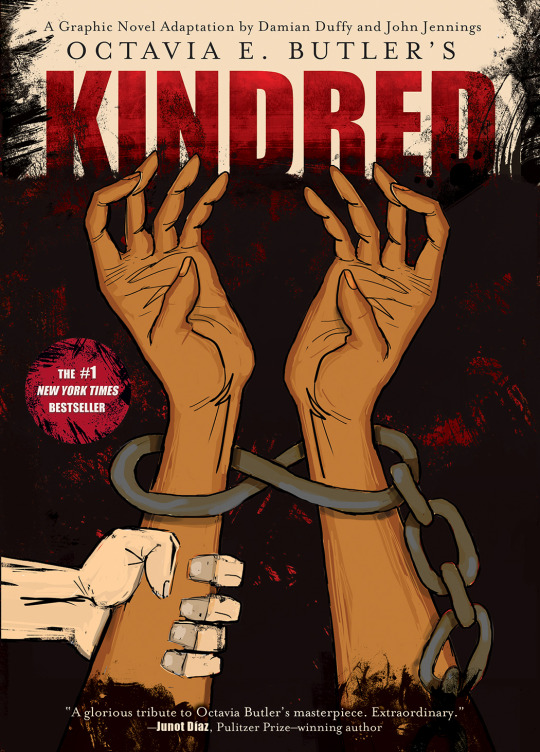
Kindred: A Graphic Novel Adaptation by Octavia Butler; Adapted by Damian Duffy and illustrated by John Jennings
More than 35 years after its release, Kindred continues to draw in new readers with its deep exploration of the violence and loss of humanity caused by slavery in the United States, and its complex and lasting impact on the present day. Adapted by celebrated academics and comics artists Damian Duffy and John Jennings, this graphic novel powerfully renders Butler’s mysterious and moving story, which spans racial and gender divides in the antebellum South through the 20th century.
Buy Links:
IndieBound: http://bit.ly/2kT3Iv4
ABRAMS: http://bit.ly/2kTbrcr
Amazon: http://amzn.to/2kTf0iT
B&N: http://bit.ly/2kT8dpm

Power to the People: The World of the Black Panthers by Bobby Seale; photographer Stephen Shames
Admired, reviled, emulated, misunderstood, the Black Panther Party was one of the most creative and influential responses to racism and inequality in American history. They advocated armed self-defense to counter police brutality, and initiated a program of patrolling the police with shotguns—and law books. Published on the 50th anniversary of the party’s founding, Power to the People is the in-depth chronicle of the only radical political party in America to make a difference in the struggle for civil rights.
Buy Links:
IndieBound: http://bit.ly/2kTclFL
ABRAMS: http://bit.ly/2kTfo11
Amazon: http://amzn.to/2kT8E3b
B&N: http://bit.ly/2kSY5gi

The Best I Could Do: An Illustrated Memoir by Thi Bui
This beautifully illustrated and emotional story is an evocative memoir about the search for a better future and a longing for the past. Exploring the anguish of immigration and the lasting effects that displacement has on a child and her family, debut author Thi Bui documents the story of her family’s daring escape after the fall of South Vietnam in the 1970s, and the difficulties they faced building new lives for themselves.
Buy Links:
IndieBound: http://bit.ly/2kTfeXt
ABRAMS: http://bit.ly/2kT0M1y
Amazon: http://amzn.to/2kT71SW
B&N: http://bit.ly/2kTa8Kw
Chronicle Books

Golden Domes and Silver Lanterns: A Muslim Book of Colors by Hena Khan, illustrated by Mehrdokht Amini
Magnificently capturing the colorful world of Islam for the youngest readers, this breathtaking and informative picture book celebrates Islam’s beauty and traditions. From a red prayer rug to a blue hijab, everyday colors are given special meaning as young readers learn about clothing, food, and other important elements of Islamic culture, with a young Muslim girl as a guide.
Buy Links:
Indiebound: https://goo.gl/hz8CiN
Chronicle Books: http://ss1.us/a/XVNvTje3
Amazon: http://amzn.to/2kOJp4Z
Barnes & Noble: https://goo.gl/11nzG2
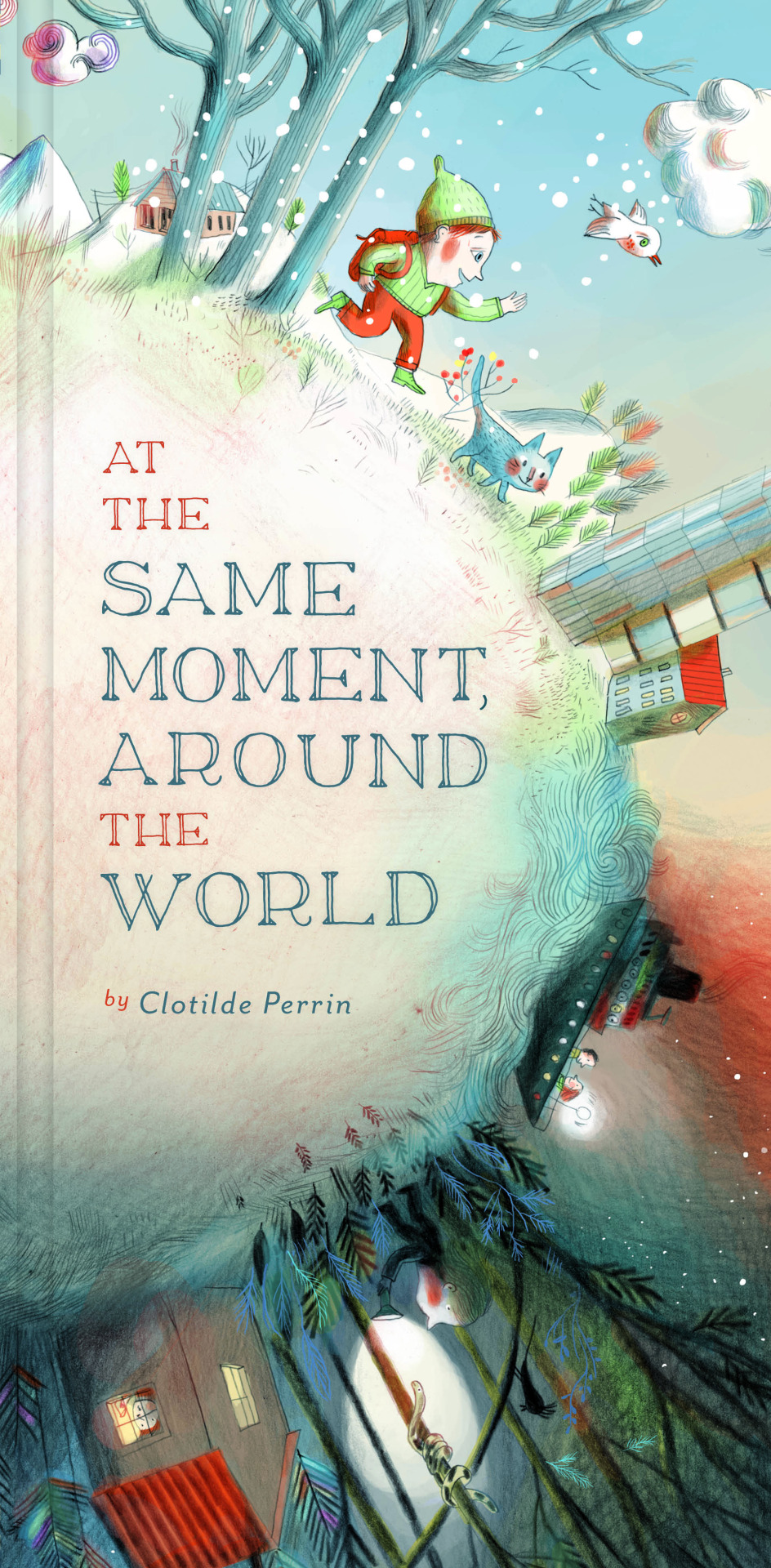
At the Same Moment, Around the World by Clotilde Perrin
Clotilde Perrin takes readers eastward from the Greenwich meridian, from day to night, with each page portraying one of (the original) 24 time zones. Discover Benedict drinking hot chocolate in Paris, France; Mitko chasing the school bus in Sofia, Bulgaria; and Khanh having a little nap in Hanoi, Vietnam. Strong back matter empowers readers to learn about the history of timekeeping and time zones, and to explore where each of the characters lives on the world map.
Buy Links:
Indiebound: https://goo.gl/j07B4d
Chronicle Books: http://ss1.us/a/rdbTsers
Amazon: http://amzn.to/2jRTgTO
Barnes & Noble: https://goo.gl/329S6H

Loving vs. Virginia: A Documentary Novel of the Landmark Civil Rights Case by Patricia Hruby Powell, Illustrated by Shadra Strickland
From acclaimed author Patricia Hruby Powell comes the story of a landmark civil rights case, told in spare and gorgeous verse. In 1955, in Caroline County, Virginia, amidst segregation and prejudice, injustice and cruelty, two teenagers fell in love. Their life together broke the law, but their determination would change it. Richard and Mildred Loving were at the heart of a Supreme Court case that legalized marriage between races, and a story of the devoted couple who faced discrimination, fought it, and won.
Buy Links:
Indiebound: https://goo.gl/96Gupl
Chronicle Books: http://ss1.us/a/ICBp0PDQ
Amazon: http://amzn.to/2kOIS3a
Barnes & Noble: https://goo.gl/98Zbp8
7 notes
·
View notes
Text
Marie and Pierre Curie
Maria Salomea Skłodowska was born on the 7ᵗʰ of November 1867 in Warsaw. Both her parents were teachers who believed deeply in the importance of education. Marie had her first lessons in physics and chemistry from her father. Maria spent some impoverished years as a teacher and governess before at the age of 24 she joined her sister Bronia in Paris in order to study mathematics and physics at the Sorbonne, earning degrees in both subjects in 1893. In the spring 1894 she met the physicist Pierre Curie. They married in 1985, and Marie subsequently gave birth to two daughters, Irene (1897) and Eve (1904).
Pierre Curie, born on the 15 ᵗʰ of May 18959 obtained his doctorate in the year of he married Maria, but he had already distinguished himself (along with his brother Jacques) in the study of the properties of crystals. He discovered the phenomenon of piezoelectricity, whereby changes in the volume of certain crystals excite small electric potentials.
Since 1882, Pierre had headed the laboratory at the Ecole de Physique et de Chimie Industrielle in Paris, and it was here that both Marie and Pierre continued to work after their marriage. For her doctoral thesis, Madame Curie decided to study the mysterious radiation that had been discovered in 1896 by Henri Becquerel.
Pierre immediately understood the importance of this supposition and joined his wife's work. In the course of their research over the next year, they discovered two new spontaneously radiating elements, which they named polonium (after Marie's native country) and radium. A third element, actinium, was discovered by their colleague Andre Debierne. They now began the tedious and monumental task of isolating these elements so that their chemical properties could be determined.
On the 19ᵗʰ of April 1906, Pierre was run over by a horse-drawn wagon near the Pont Neuf in Paris and killed. Now Marie was left alone with two daughters, Irène aged 9 and Ève aged 2. Shock broke her down totally to begin with. But even now she could draw on the toughness and perseverance that were fundamental aspects of her character. When she was offered a pension, she refused it: I am 38 and able to support myself, was her answer. She was appointed to succeed Pierre as the head of the laboratory and to be responsible for his teaching duties. She thus became the first woman ever appointed to teach at the Sorbonne.
Her daughter Irène was now 9 years old. Marie had definite ideas about the upbringing and education of children that she now wanted to put into practice. Her circle of friends consisted of a small group of professors with children of school age. Marie organized a private school with the parents themselves acting as teachers. A group of some ten children were accordingly taught only by prominent professors: Jean Perrin, Paul Langevin, Édouard Chavannes, a professor of Chinese, Henri Mouton from the Pasteur Institute, a sculptor was engaged for modeling and drawing. Marie took the view that scientific subjects should be taught at an early age but not according to a too rigid curriculum. It was important for children to be able to develop freely. Games and physical activities took up much of the time.
Marie was the first woman to win a Nobel Prize in 1903, the only woman to win the Nobel Prize twice, again in 1911, and the only person ever to win the Nobel Prize in two different scientific fields. She was part of the Curie family legacy of five Nobel Prizes.
Despite the second Nobel Prize and an invitation to the first Solvay Conference with the world’s leading physicists, including Einstein, Poincaré and Planck, 1911 became a dark year in Marie’s life. In two smear campaigns she was to experience the inconstancy of the French press. The first was started on 16 November 1910, when, by an article in Le Figaro, it became known that she was willing to be nominated for election to l’Académie des Sciences. Notwithstanding, it turned out that it was not merit that was decisive. The dark underlying currents of anti-Semitism, prejudice against women, xenophobia and even anti-science attitudes that existed in French society came welling up to the surface. The most rabid paper was the ultra-nationalistic and anti-Semitic L’Action Française. Jokes in bad taste alternated with outrageous accusations. She came from Poland, though admittedly she was formally a Catholic but her name Sklodowska indicated that she might be of Jewish origin, and so on. The vote on January 23, 1911 was taken in the presence of journalists and a tumultuous atmosphere. Marie, lost the election, a Nobel Prize in 1903 and support from prominent researchers such as Jean Perrin, Henri Poincaré, Paul Appell and the permanent secretary of the Académie, Gaston Darboux, were not sufficient to make the Académie open its doors.
However, Marie’s tribulations were not at an end. When, at the beginning of November 1911, Marie went to Belgium, being invited with the world’s most eminent physicists to attend the first Solvay Conference, she received a message that a new campaign had started in the press. Now it was a matter of her private life and her relations with her colleague Paul Langevin, who had also been invited to the conference. He had had marital problems for several years and had moved from his suburban home to a small apartment in Paris. Marie was depicted as the reason. Both were described in slanderous terms. The scandal developed dramatically.
During World War I, Madame Curie dedicated herself entirely to the development of the use of X rays in medicine. In 1918 she took upon herself the direction of the scientific department of the Radium Institute, which she had planned with her husband, and where her daughter Irene Joliot-Curie worked with her husband Frederic Joliot. Marie's research for the rest of her life was dedicated to the chemistry of radioactive materials and their medical applications. She frequently lectured abroad, and she labored to establish international scholarships for scientists.
Marie Curie died on the 4ᵗʰ of July 1934, aged 66, at a sanatorium in Sancellemoz (Haute-Savoie), France, of aplastic anaemia from exposure to radiation in the course of her scientific research and in the course of her radiological work at field hospitals during World War I.
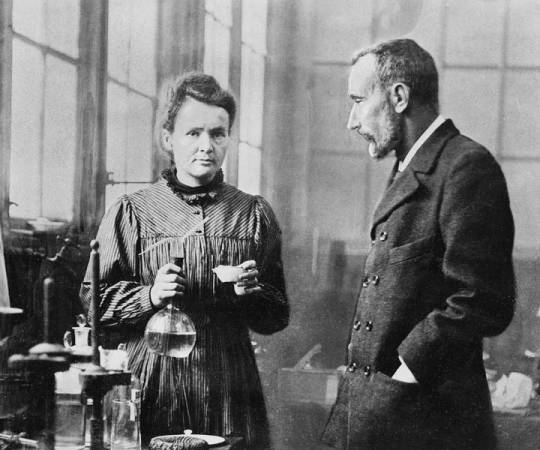
0 notes
Text
Friday Faves
Hi friends! Happy Friday! I hope you’re having a wonderful week so far. I can’t believe the girls only have a few weeks left of school! We’re in frenzy mode leading to the end of the year, and have lots of fun events in the mix. This weekend, we’ll be swimming with friends, catching up in a class playdate, doing a CF walk, and the Pilot will continue to be in airline study mode. Please keep your fingers crossed for him. <3
It’s time for the weekly Friday Faves party. This is where I share some of my favorite finds from the week and around the web, and I always love to hear about what you’re enjoying, too. Please share something you’re lovin’ in the comments section below.
Read, watch, listen:
Instant Family. This was a surprising delight of a movie. I put it on the other night because I just wanted to watch something lighthearted before bed, and was crying in the first 15 minutes (not in a sad way, but in an “omg that’s beautiful” kinda way). The cast is a gold star, and there’s a lot of sarcasm and hilarious moments to brighten up any of the more serious parts. This movie is based on a true story, and follows a married couple after they bring three foster siblings into their family.
I highly recommend it if you’re looking for a fun weekend movie.
Radium Girls. A friend recommended this a long time ago, so it’s been sitting in my Kindle untouched. I finally started the book this week and can’t put it down. The book follows the story of a handful of the “radium girls,” who worked in a factory painting the dials of military watches with this self-luminescent paint, composed of radium. In those days, radium was thought to be a miraculous health elixir, as it could burn cancer cells in the body, and so the girls didn’t think twice when they were instructed to “lip, dip, paint” – pressing their radium-laced paintbrush in between their lips in order to draw perfectly fine lines. Needless to say, they encountered various ailments from their exposure to radium and their work in the factories. While it’s a non-fiction book, it reads like a fiction novel, and has me equally intrigued and horrified that this actually happened.
5 things you can do to feel less stressed
6 more book suggestions for spring
Simple habits to love your life more
Tips to get over public speaking fears
Fashion + beauty:
This gingham dress came in my Trunk Club and I’ve already worn it for Easter brunch and a casual date night. Midi-length dresses aren’t usually flattering on me (I’m not a tall person), but for some reason, this one works, and I love it! The fabric is super light and it has just the right amount of swish as you walk.
(Shoes are on sale here)
I’ve still been loving my Trunk Club deliveries as a way to spice up my summer wardrobe. All of the pieces are incredible quality (because they’re from Nordstrom) and it gives me the chance to decline pieces before they’re sent to be replaced with alternate items. It’s also fun to message my stylist on the app. If you’ve been wanting to give it a whirl, my referral link is here!
These Athleta shorts. I went in to pick up a couple of things with a gift card and came across these lightweight, high-waisted shorts. They’re extremely flattering and made out of super light tech material. I paired them with this top and love the fit. It’s one of those mom uniform outfits that’s functional and comfortable but still looks put-together.
(Shoes are here)
This week’s Beautycounter pick is this Nectar blush, which is a dupe of my beloved Nars Orgasm blush. The color looks exactly the same (!) and is a great safe alternative. All of Beautycounter’s products are screened heavy metals, since it’s easy for those to sneak in the supply chain when you’re using materials from the earth. It’s nice to know that I can get the same color I love without heavy metal hitchhikers that are commonly found in blushes and bronzers. Check it out here.
The Sephora spring bonus event is in full force! If you’re browsing around this weekend, here are my fave picks:
These undereye bag patches. I stash these in my suitcase or carry-on bag every time we travel. They make eye bag swelling go down a ton, so they’re helpful for mornings when I’m a little tired or look swollen from traveling.
This mascara primer is a gamechanger. It adds a ton of length to your lashes – I’m often asked if I have eyelash extensions when I use this stuff – and I think it helps to condition them a bit, too.
This is my favorite cleanser.
This is a jar of pure magic.
Good eats:
I’m back on a serious acai bowl kick. I’ve been meeting up with friends at Nekter after our workouts, and they’re such a refreshing treat after a good sweat. I love the peanut butter acai bowl with pea protein added. SO good.
A recent breakfast pic:
(Siete tortillas, 1 egg, 6 liquid egg whites, spinach, Paleo chicken sausage from Costco)
Dinner from Renee’s Organic Oven: zucchini noodles, all the veggies, marinara, kalamata olives, and chicken
Officially obsessed with these bites (found them at CVS):
Cinco de Mayo is this weekend! If you’re planning your fiesta, here are some must-make recipes from the blog:
The best cheesy enchiladas
Instant Pot Mexican rice (so easy and so good!)
Guacamole or this deconstructed guacamole salad
Tequila Sangria
Fruit salad
If you’re looking for a dessert idea, this tres leches cake is a bit labor intensive, but so worth it.
Fitness:
25-minute HIIT workout
A playlist for your next intense workout
How to combine leg day with running
Happy Friday, friends!
xo
Gina
The post Friday Faves appeared first on The Fitnessista.
Friday Faves published first on https://olimpsportnutritionde.tumblr.com/
0 notes
Link
LEO SZILARD’S short story “The Voice of the Dolphins,” published in 1961, imagines a history of the world written in 1990. The story begins with the sentence, “On several occasions between 1960 and 1985, the world narrowly escaped an all-out atomic war.” One of the 20th century’s greatest physicists, Szilard knew whereof he spoke: along with Enrico Fermi, he was responsible for creating the first nuclear chain reaction in 1942. Szilard understood very well the history, physics, and destructive power of the Bomb. He could have chosen to write a tense record of the 1945 explosion at Hiroshima, along the lines of John Hersey’s classic study, or he might have related the history of the Bomb’s invention à la Richard Rhodes. Instead, he chose to write a piece of fiction — dry almost to the point of tedium — about the geopolitical future of the Atomic Age.
His choice is fascinating, not least because it suggests that Szilard’s interests as a man of science extended far beyond the domain of physics into the social and political spheres. His actions belie the sort of caricature of scientists found in Kurt Vonnegut’s Cat’s Cradle (1963) and other midcentury texts — an autistic tinkerer who leads the world to the brink of destruction by solving a military problem without any thought for the consequences. On the contrary, Szilard’s fiction is a serious attempt to grapple with the ethico-political impact of the epochal invention he in large part helped to author.
Why should Szilard’s 1961 story be of interest to us today? What might it say about our global situation 30 years further on from the end of his own 30-year projection? Scientists today not only continue to be caricatured in popular culture but are also routinely dismissed, defunded, and depicted as political lackeys. To this disturbing trend, Szilard’s book provides a refreshing antidote. More importantly, “The Voice of the Dolphins” stands as a central hub in a century-long exchange — both scientific and fictional — on the likelihood of nuclear war. It offers a potent allegory that can help reinvent our understanding of the Bomb and its social effects.
According to William Lanouette’s 1992 biography of Szilard, Genius in the Shadows, Szilard dictated the first draft of the story over the course of a single day in June 1960. It is not a stunning literary work by any means, even after extensive reworking with his partner, Gertrud Weiss, and polishing by the editors at Simon & Schuster (who released Szilard’s 1961 collection The Voice of the Dolphin and Other Stories). Even so, it was a perfect vehicle for some of the ideas Szilard had been developing during previous years in interviews with Edward R. Murrow and others. One idea that caused quite a stir at the time was his suggestion that the United States and USSR should agree to obliterate one of each other’s cities in a calculated nuclear exchange, in order to deter an all-out war. By 1960, however, Szilard’s popularity in the media had begun to wane, his urgent messages ignored by major magazines and newspapers. Frustrated, he vowed that “[i]f they cannot take it straight, they will get it in fiction.”
The story focuses on a research institute in Vienna where a pod of captured dolphins is kept in a tank. The scientists learn to communicate with the dolphins, quickly realizing that they are far more intelligent than human beings. For example, the dolphins invent a strain of algae that is both a cheap source of protein and a drug that suppresses fertility in women, thus solving the problems of world hunger and over-population in a single stroke. Royalties from the sale of the algae make the institute rich. On top of this, the dolphins suggest a series of experiments for the scientists to perform that consistently win Nobel Prizes. Skillfully deploying its wealth and prestige, the institute proceeds to manipulate the course of world events through a range of subtle interventions behind the scenes, including the bribing of politicians.
Until roughly the midpoint of the story, we learn about the dolphins’ deeds secondhand, through the narrator. But then Szilard shifts into the perspective of the dolphins themselves. Long since bored with science and math, the only thing that keeps their attention is US politics, which they claim not to understand. The American staff is often perplexed and exasperated by the questions the dolphins ask, such as: “Is it correct to assume that Americans are free to say what they think, because they do not think what they are not free to say?” This query highlights a key theme of the story — that the acts and utterances of politicians are constrained by a failure of nerve and imagination.
The story proceeds by describing how the planet manages to avoid nuclear war — in particular, “the contribution that the dolphins made toward the establishment of lasting peace.” It is not often easy, however, to detect the dolphins’ interventions in world affairs. Sometimes we can infer their presence from a sudden change in the position of one of the parties to a negotiation. The views of prominent scientists also converge with those of the dolphins. At one point, the narrator refers to a comment by Albert Einstein regarding disarmament talks at the League of Nations in 1925; in the style of the dolphins, Einstein posed a rhetorical question: “What would you think about a meeting convened because an increasing number of people being knifed to death […] which proceeds to discuss just how long and how sharp shall be the knife?” In the end, after lasting peace is achieved, the dolphins abruptly die of a virus and the institute burns down, destroying almost all of its records. Having accomplished his aim of providing an object lesson on the value of disinterested science, Szilard, like the dolphins, goes silent.
“The Voice of the Dolphins” culminates a tradition of thinking about the threat and promise of nuclear energy. In 1908, the physicist Frederick Soddy gave a series of lectures at the University of Glasgow, later published as a book, The Interpretation of Radium (1909). After reading this tome, H. G. Wells immediately dropped his other projects to write a prophetic 1914 novel, The World Set Free, which he dedicated to Soddy. Developing Soddy’s views of the revolutionary power of the atom, Wells’s novel projects that, by 1933, this power would be harnessed to produce atomic engines, which, in turn, would lead to a massive expansion of industry and a complete reorganization of society. Ultimately, Wells predicts that, by 1956, an all-out atomic war would erupt, with weapons capable of pulverizing cities into rubble. In his last chapters, following the war, Wells imagines the emergence of a utopian world government led by a group of enlightened ascetics living on a higher plane.
According to Lanouette, Szilard read Wells’s The World Set Free around 1933, at the time he and Fermi were theorizing the atomic chain reaction. Wells’s prophetic book informed Szilard’s thinking in this area, in counterpoint to an editorial in the London Times by Ernest Rutherford, one of Soddy’s mentors, which had dismissed the notion of releasing the energy stored in the atom as “moonshine.” Szilard actually traveled to London to speak with Wells, his concerns focused as much on the possibility of a world government as on developments in nuclear physics. Given the epochal challenge of atomic power, Szilard’s idea was that there should be a group of humans of high intelligence (which he referred to as “The Bund”) who guided the politics of the world through subtle interventions — an idea later represented by the dolphins in their tank.
Thus, a discovery in physics by Soddy led to a fictional account by Wells, which led back to a discovery in physics by Szilard and Fermi, and ultimately to Szilard’s short story. One conclusion we can draw from this intellectual chain reaction is that Szilard had good reason to respect the power of fiction to caution and inspire. At the end of his life, fearful that physics had become an engine of war, and frustrated that his ideas for avoiding that war were not being heard, he turned to fiction.
“The Voice of the Dolphins” was for a time required reading at the University of Chicago Law School, and was very likely known to the members of LANAC (Lawyers Alliance for Nuclear Arms Control). Their work, described in Gilbert Steil’s new book The Collaboration Response (2017), was similar in many ways to that of the Vienna Institute in Szilard’s story. Vonnegut too, who lived in Chicago’s Hyde Park at the same time as Szilard, was likely aware of the noted physicist’s proselytizing for a Wellsian world government, as Ginger Strand’s 2015 book The Brothers Vonnegut: Science and Fiction in the House of Magic suggests. It’s possible that Szilard’s ideas inspired the darker vision of Vonnegut’s Cat’s Cradle, which in turn had an impact on an entire generation of young Americans.
Like Wells, Szilard and Vonnegut were drawn to the prophetic tropes of science fiction to articulate their — respectively utopian and dystopian — visions. For all their ideological differences, scientist and novelist were united in a conviction that the powers unleashed by fiction, like those hiding in the atom, hold the ability to change, if not the world, then our collective view of its promises and perils.
¤
Duncan Holaday is a craft distiller in northern Vermont. Previously, he was Head of the Division of Research and Director of Graduate Studies at the NTU School of Communication Studies in Singapore.
The post Listening to the Dolphins: Leo Szilard on Nuclear War appeared first on Los Angeles Review of Books.
from Los Angeles Review of Books http://ift.tt/2o3k4Es
via IFTTT
0 notes
Text
Chapter 5 - Steve and Stevonnie
Stevonnie took off at a run in the opposite direction that the creature had gone their hair flowing out behind them. Captain America was hot on their heels.
Steve still could not believe what he what he had just witnessed. Even after the crazy rooms, the strange creature, finding his lost compass, the fact that he was following what apparently was a boy and a girl that somehow fused together was crazy.
She came to a screeching halt as Cap came up behind her. He was confused, “Um, didn’t that thing go the other way? Shouldn’t we be chasing it down?”
Stevonnie smiled over their shoulder, “yes Sir but I thought you might want this.” They stomped their foot down, and Cap’s shield sprang up into their hands. Contemplating it before giving it to Cap, “Wow, nice weight, the balance feels a lot like ours.”
For the first time in a, while Cap smiled, warriors do what warriors do, they talk about their weapons and equipment. “Thanks, you have to admit yours has some great options too, the whole magically disappearing thing.”
“For sure, but we can talk about it after.” she pointed over Steves' shoulder, as he turned to look he saw the monster scuttling towards them fast enough that it was churning up a trail of the flotsam and jetsom of Amethyst’s room in its wake. Stevonnie broke left, and cap went right, as the moved off it became eminently apparent that the monster was focused on one thing, Captain America!
Cap took off at a run with the monster in hot pursuit. As he ducked and dodged, through the piles he could hear it gaining on him. It certainly was fast.
Behind them, Stevonnie was almost upon the creature just as it was closing in on Cap. They bounded forward catching it by its tail. With a jerk, they brought it to a halt and without a second thought spun the creature and threw it into a pile of odds and ends a little way in the distance.
Stevonnie mused as Cap came to stand beside them, "odd most of the gem creatures never seem to be very interested in humans, but this one gives the impression it’s very interested in you."
Cap shrugged, "honest I have no idea, I still don't really know what is going on here."
The creature tore at them again, intent on getting Cap.
"Mmm, well here it comes again if you jog over that way I will see if I can surprise it and might have a chance to poof it."
"Poof?" Cap said as he jogged off. Stevonnie hid behind one of the larger crystals, sword at the ready as the creature scuttled towards Cap.
They jumped out as the creature swooshed past swinging their sword, but to their surprise, the sword struck solid ground. The creature had dodged, it was faster than anything they had been up against before. It was still heading towards Cap, they took off after the creature at a run.
Cap was running tired of running. He spun around shield at the ready as he watched as the creature approach. Murmuring to himself, 'Ok Steve, keep it together this time. Who knows maybe you will wake up soon,' it certainly did seem like a bad dream.
The creature slammed into his shield, again grabbing on all sides, this time he was ready for it as it reached under the shield. He stomped the first hand that appeared causing it to let out a load hiss.
Stevonnie had caught up and was coming in from behind. The creature had another trick up its sleeve. As they approached the creature's tail, suddenly it turned in their direction. As they moved back and forth, the tail followed their every move. It could see!
As the made their final approach, Stevonnie summoned their shield and reached over their shoulder to draw Rose’s sword. Suddenly the creature pulled its limbs in tight and rolled. Once it was a ways away, it burrowed into a pile of Amethyst’s stuff and was gone.
Stevonne turned to Steve, “Ok, that was odd, even for a gem experiment. It certainly has a thing for you.”
“That and it certainly doesn’t like that sword of yours.”
“Uh, yes. It’s possible that during the gem war it might have been used by Rose to shatter enemy gem soldiers. Though I am not sure, the crystal gems haven't told us much about the war. It might be related. I do know that Rose wasn’t happy with what she did. Uh, but we can discuss that later. Any idea why it might be so interested in you?”
Steve pondered, “hmm, no idea.”
“Well, it didn’t seem interested in you when you first got here. Wait! What did you pick up when you first landed in Amethyst’s room?”
Steve reached into one of his pouches, “ Just this.” He pulled out his old compass, the one with Peggy's picture in it.
‘Wow, can I see it?” Steve handed it over. Stevonnie took it, flipped it over, weighed it back and forth between their hands, brought it close to their face to smell it. “Hmmm.” They cupped their hands and looked at the face of the compass. “It glows!”
Steven smiled, “Oh ya, our compasses back then had radium painted on them to glow in the dark. I’m actually not sure about this one, it was a gift from Tony's dad Howard so gosh only knows what he painted it with.”
Stevonnie pondered, “so it's probably radioactive. I wonder if this is what is exciting our friend over there.” They jerked her thumb in the direction of the gem monster.
“If it is, we can use it to bait a trap so you can… Poof It?... we need a good open spot to draw it to then maybe you can get to some high ground?"
Stevonnie smiled and giggled. "I think that we can manage that. See that crystal sticking up over there? If you can get it to follow you into the clear space in front of it, I’ll be waiting."
Steve looked at the crystal, "that has to be forty feet in the air how are you going to climb it?"
"Oh, you worry about the creature, we will worry about that."
Steve gave her a thumbs up as he started to jog towards where the creature disappeared to. "Back soon."
As he ran, he pulled the compass out. He flipped it open having a quick look at Peggy. "Don't worry I got this Peg… I hope."
It didn’t take long to get the creature's attention. It launched itself in Steve's direction with a crash more stuff flying all around. Steve wasn’t sure how much time the girl would need to scale the crystal but the speed it was coming at him he couldn’t spend much time to think about it.
He could hear it wheeze and grunt behind him as he ran. He looked up as he approached the crystal and sure enough she was perched on top. Steve didn't want to think how this was going to work. He hoped she had something up her sleeve or she was going to break her neck getting down.
Suddenly she was standing on the side of the crystal as if gravity didn't matter. Pushing off she launched herself sword in front. She pierced it dead centre, and with a pop, it disappeared. She executed a perfect tuck roll coming to her feet as her hair flowed behind her. She turned and smiled a huge smile at Steve.
Walking over to where the creature had been They stooped down and picked up the two crystals that had been on the front and tail of the creature. With a hum suddenly a pink bubble appeared around them and then with tap the bubble shot up and disappeared.
Stevonnie walked up to Steve and gave him a hug. "Come on I'll make you some tea."
Ao3
Let me know what you think. or comment on Ao3
0 notes